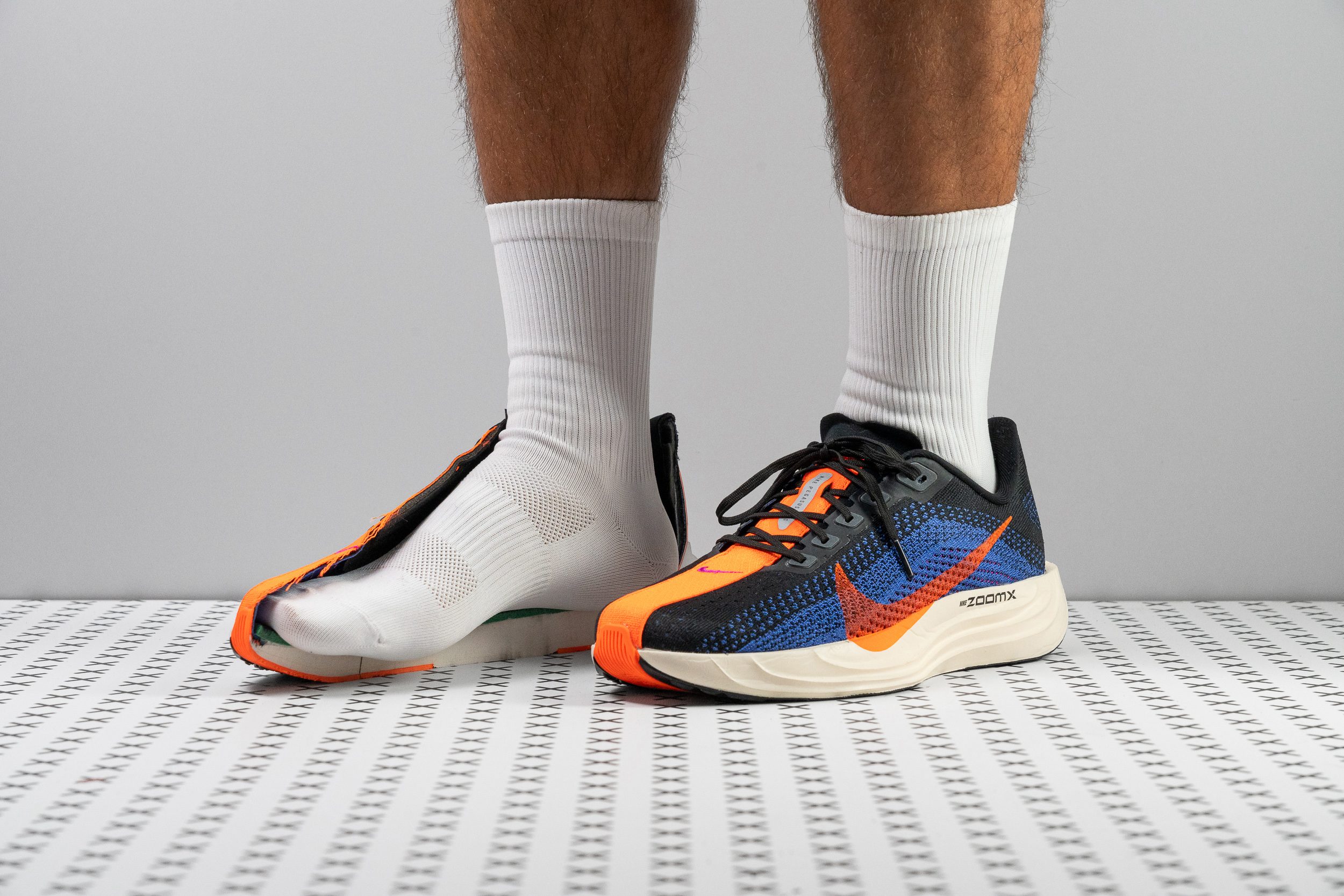Our verdict
- Top pick in best long distance Nike running shoes
Pros
- Amazing look
- Bouncy ZoomX midsole
- Much faster than a regular Pegasus
- Great for tempo sessions
- Flexible build
- Good option for lightweight runners
- Versatile for multiple paces
- Classic, fun running experience
Cons
- Limited stability
- Narrow, tapered toebox
- Overpriced
- Non-gusseted tongue
Audience verdict
- Top 14% in road running shoes
- Top 15% in Nike running shoes
- Top 12% most popular running shoes
Comparison
The most similar running shoes compared
+ + Add a shoe | |||||
|---|---|---|---|---|---|
| Audience score | 90 Superb! | 77 Decent! | 85 Good! | 78 Decent! | |
| Price | £165 | £65 | £155 | £150 | |
| Pace | Daily runningTempo | Daily running | Daily running | Tempo | |
| Shock absorption | Moderate | Moderate | Moderate | - | |
| Energy return | Moderate | Low | Moderate | - | |
| Traction | Moderate | Moderate | Moderate | - | |
| Arch support | Neutral | Neutral | Neutral | Neutral | |
| Weight lab Weight brand | 8.6 oz / 244g 8.6 oz / 244g | 9.3 oz / 265g 9.4 oz / 267g | 11.1 oz / 316g 11.1 oz / 316g | 9.7 oz / 275g 9.7 oz / 275g | |
| Lightweight | ✓ | ✗ | ✗ | ✗ | |
| Drop lab Drop brand | 9.4 mm 10.0 mm | 10.1 mm 10.0 mm | 9.8 mm 9.0 mm | 10.0 mm 10.0 mm | |
| Strike pattern | HeelMid/forefoot | Heel | HeelMid/forefoot | HeelMid/forefoot | |
| Size | True to size | Slightly small | Half size small | Slightly small | |
| Midsole softness | Soft | Balanced | Soft | Soft | |
| Difference in midsole softness in cold | Normal | Small | Big | Normal | |
| Toebox durability | Decent | Decent | Good | - | |
| Heel padding durability | Good | Good | Decent | - | |
| Outsole durability | Decent | Good | Good | - | |
| Breathability | Moderate | Moderate | Moderate | Moderate | |
| Width / fit | Medium | Medium | Medium | Narrow | |
| Toebox width | Medium | Medium | Medium | Narrow | |
| Stiffness | Moderate | Moderate | Moderate | Stiff | |
| Torsional rigidity | Moderate | Moderate | Moderate | Moderate | |
| Heel counter stiffness | Stiff | Moderate | Flexible | Flexible | |
| Heel lab Heel brand | 33.0 mm 34.0 mm | 32.2 mm 32.0 mm | 34.2 mm 39.0 mm | 32.0 mm 32.0 mm | |
| Forefoot lab Forefoot brand | 23.6 mm 24.0 mm | 22.1 mm 22.0 mm | 24.4 mm 30.0 mm | 22.0 mm 22.0 mm | |
| Widths available | NarrowNormal | NarrowNormalWideX-Wide | NormalWideX-Wide | NarrowNormal | |
| Orthotic friendly | ✓ | ✓ | ✓ | ✓ | |
| Season | All seasons | All seasons | All seasons | All seasons | |
| Removable insole | ✓ | ✓ | ✓ | ✓ | |
| Ranking | #43 Top 12% | #337 Bottom 9% | #198 Bottom 46% | #330 Bottom 11% | |
| Popularity | #42 Top 12% | #60 Top 17% | #197 Bottom 47% | #161 Top 44% |
Who should buy
We believe the Nike Pegasus Plus is an excellent choice for:
- Fans of the original Turbo who were disappointed by the third edition—this version is so much better in every way.
- Lightweight runners with narrow feet looking for a fast, responsive daily trainer with a lower stack height.
- Anyone who loves the Pegasus series but desires a superior upper and midsole, and is willing to pay a bit more for the premium features.
- Beginners ready to splurge on a versatile shoe for daily runs, tempo workouts, and the occasional race.
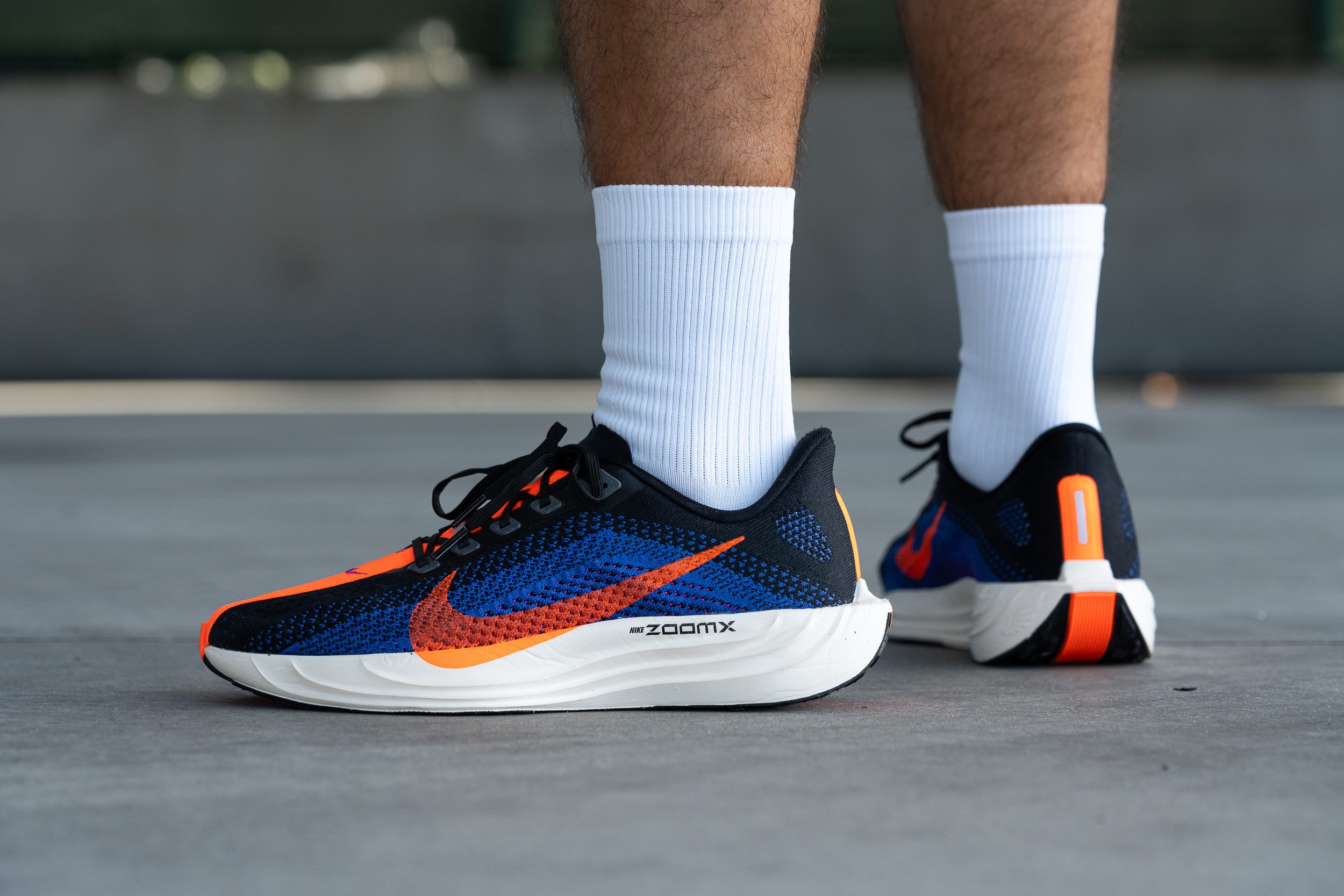
Who should NOT buy
We believe the price of the Pegasus Plus is a significant drawback, especially when compared to other shoes offering similar versatility and bounce. For runners looking to save money, the Hoka Mach 6 and ASICS Novablast 4 are excellent alternatives, providing comparable performance at a more reasonable price point.
In our view, the snug fit of the Pegasus Plus upper could be a dealbreaker, even for runners with regular-width feet. For a more comfortable fit, we suggest trying the Nike Vomero 17, which offers a roomier feel. Alternatively, the New Balance FuelCell Rebel v4 would be a great speed-training option.
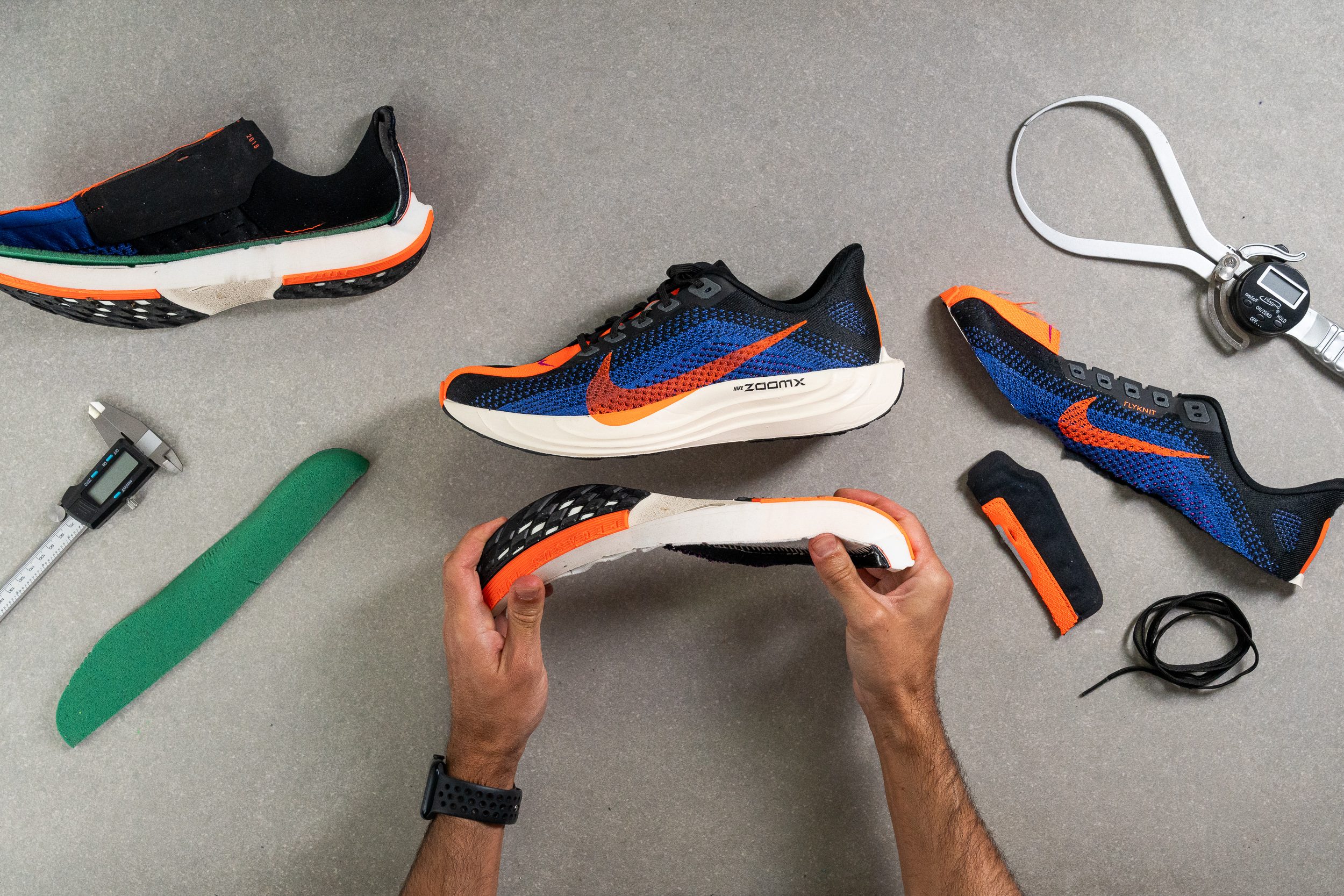
Finally, while the ZoomX foam delivers impressive energy return, the relatively low stack height of the Pegasus Plus might be a problem for marathoners. If you're planning to use this shoe for long runs, we believe the ASICS Superblast 2 is a better choice, offering more cushioning for those longer efforts.
Cushioning
Shock absorption
The silhouette of the Pegasus Plus makes it clear: this isn’t a maximalist running shoe, quite the opposite. So it wasn’t a surprise when our machine measured 125 SA in the heel and a super-low 79 SA in the forefoot. If you love ground feel, this one’s for you!

| Pegasus Plus | 125 SA |
| Average | 129 SA |
Energy return
The standout feature of the Pegasus Plus—and the reason behind its name—is the full ZoomX midsole, designed to deliver more energy return than ReactX. And yes, it delivers.
In our lab, we measured a significant boost over the regular Pegasus. This version reaches 64.4% in the heel and an impressive 70.8% in the forefoot—excellent results for a daily trainer and a clear reason behind the price increase.
| Pegasus Plus | 64.4% |
| Average | 58.5% |
Heel stack
It’s clear just by looking at the Pegasus Plus that it’s far from a maximalist shoe like the Hoka Skyflow or Puma MagMax Nitro—it’s quite the opposite!
With only 33.0 mm of stack height in the heel, it’s actually below the average running shoe, which might surprise some, especially considering the original Pegasus Turbo felt well-cushioned to most runners.

But that was back in 2018, when most tempo shoes were significantly thinner. In fact, the Pegasus Turbo 35 had just 28 mm in the heel, believe it or not. Now, with an added 5 mm, the Pegasus Plus offers more height but somehow...it feels lower than that and really close to the ground.
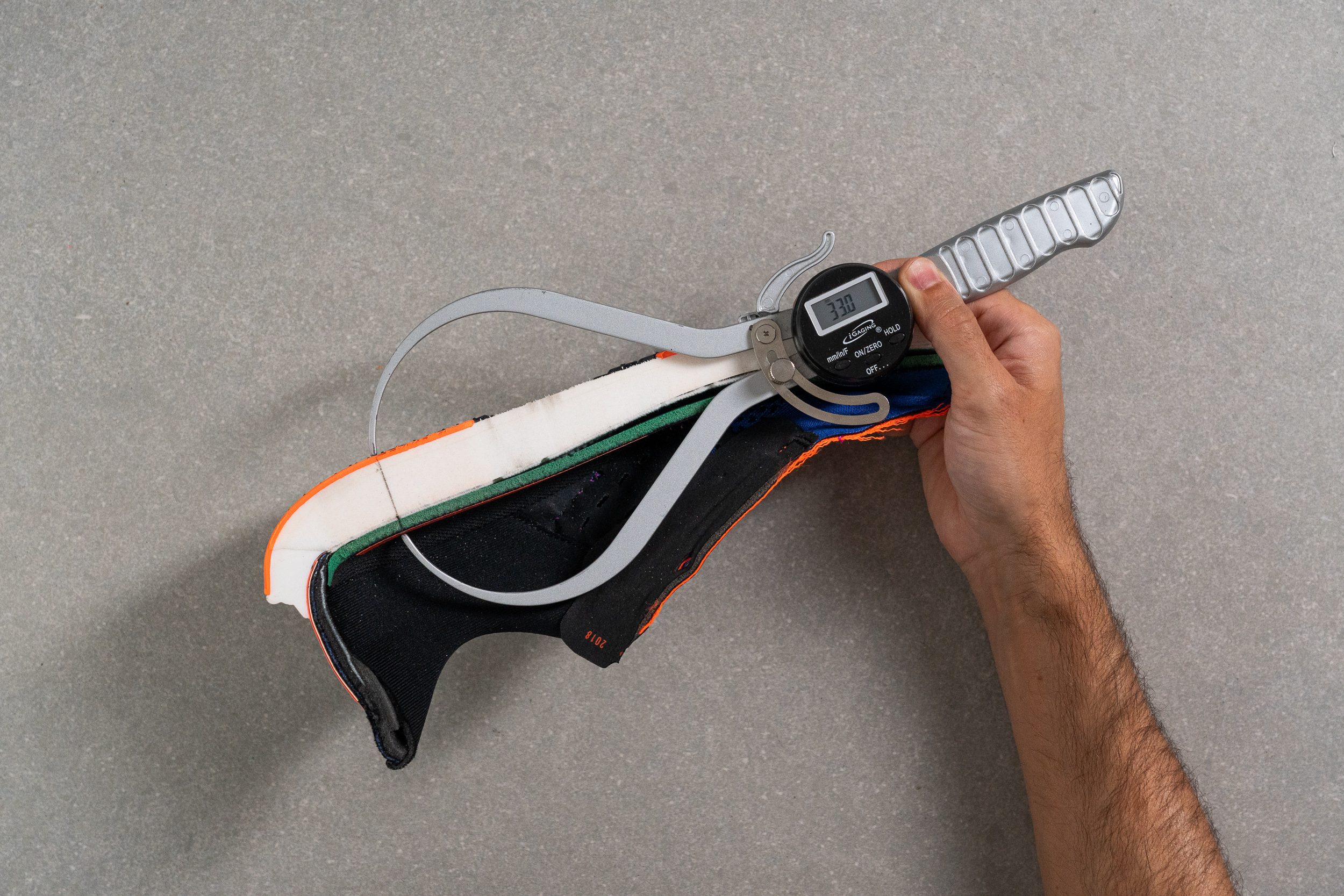
| Pegasus Plus | 33.0 mm |
| Average | 34.8 mm |
Forefoot stack
In the forefoot, we measured 23.6 mm, and our observations mirror what we said about the heel. For forefoot and midfoot strikers, this delivers a direct, reactive ride—ideal for those who aren’t fans of the new maximalist shoes with zero ground feel.
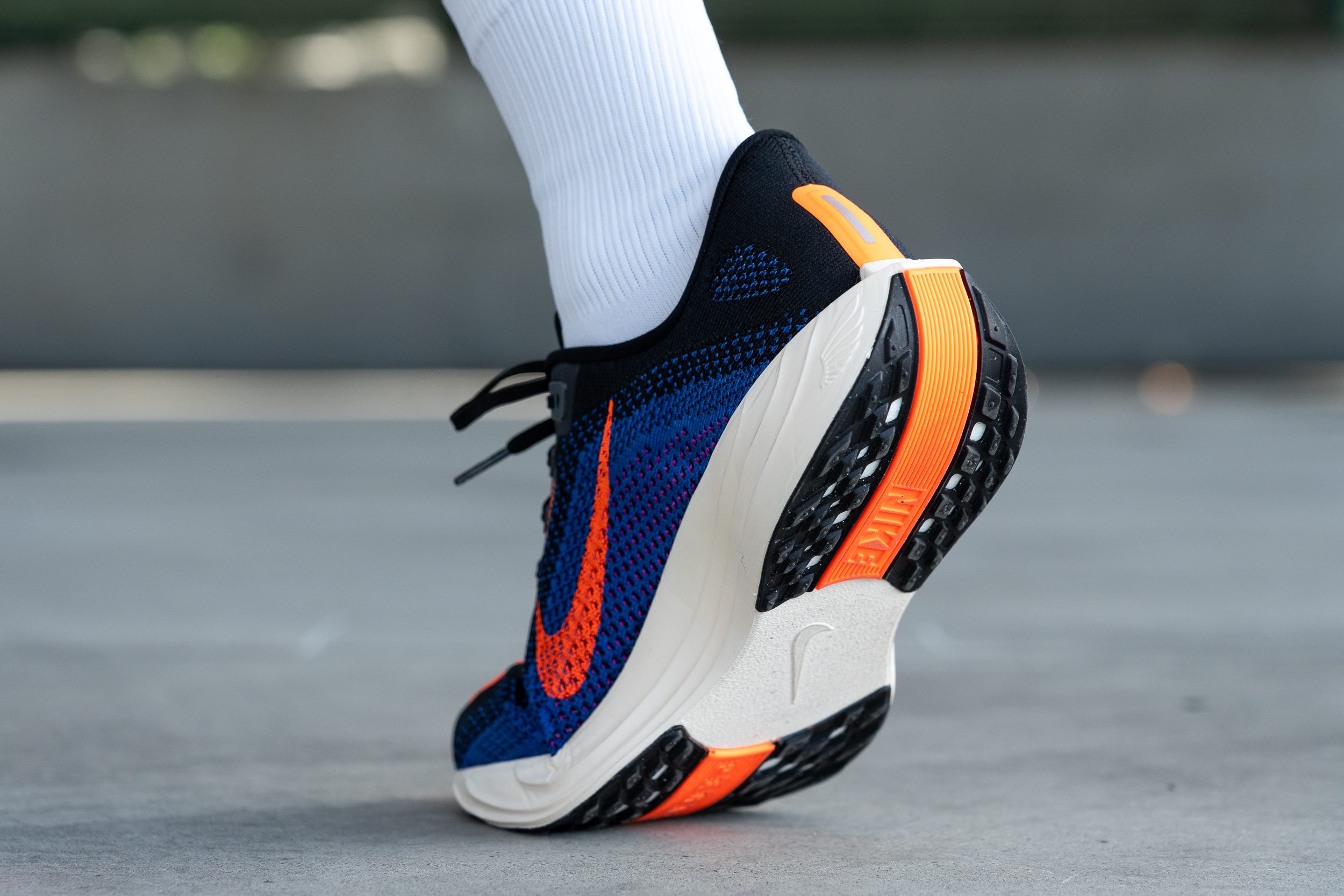
We think that even fans of high-stack shoes can benefit from including a thinner shoe in their rotation. A lightweight, non-rockered shoe like the Pegasus Plus is excellent for strengthening foot muscles and promoting a powerful toe-off during runs.
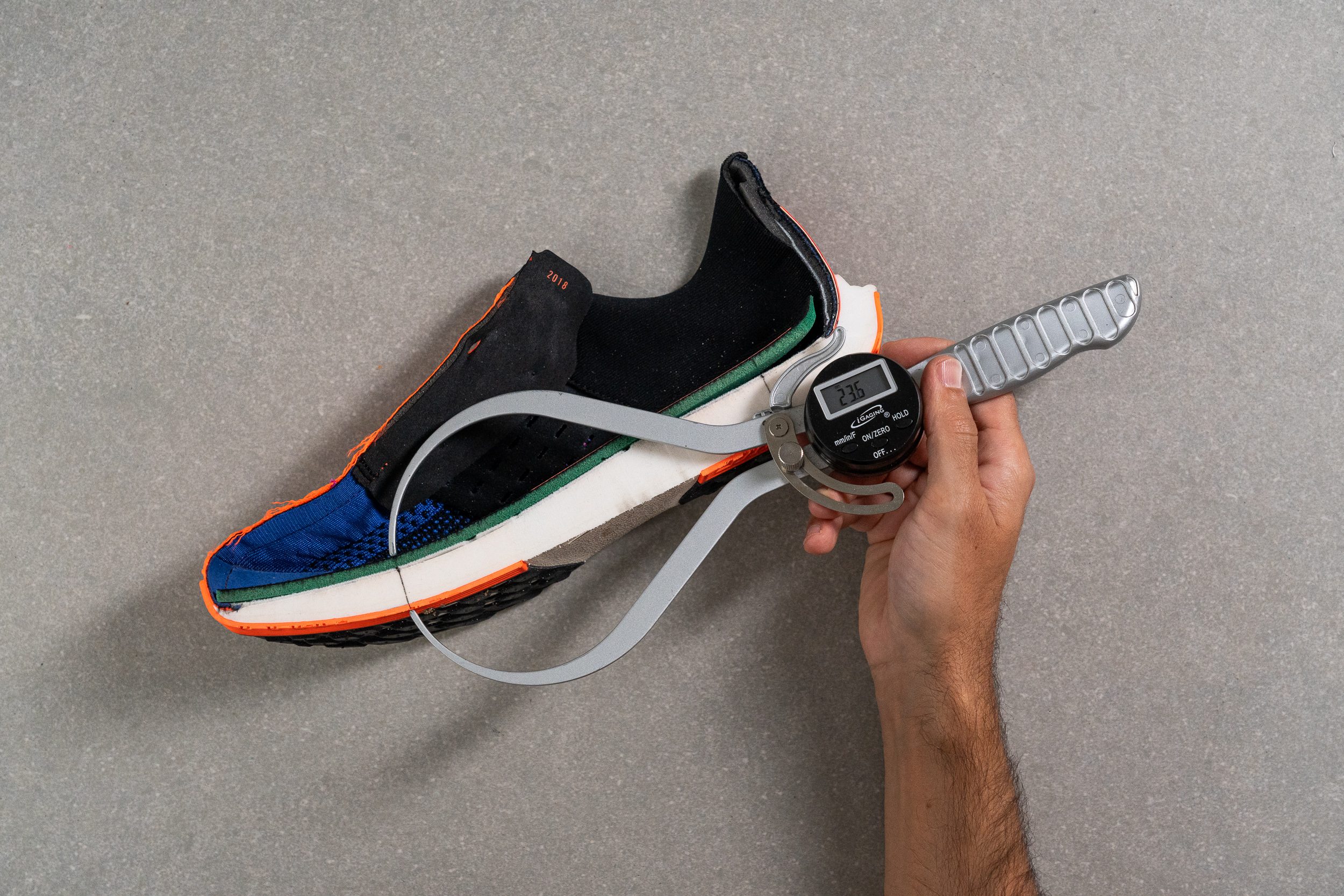
| Pegasus Plus | 23.6 mm |
| Average | 26.2 mm |
Drop
Being a Pegasus, it was no surprise for us to find a high heel-to-toe drop that works well for heel strikers. While Nike claims 10 mm, we measured 9.4 mm—a minor difference that even experienced runners won’t notice.
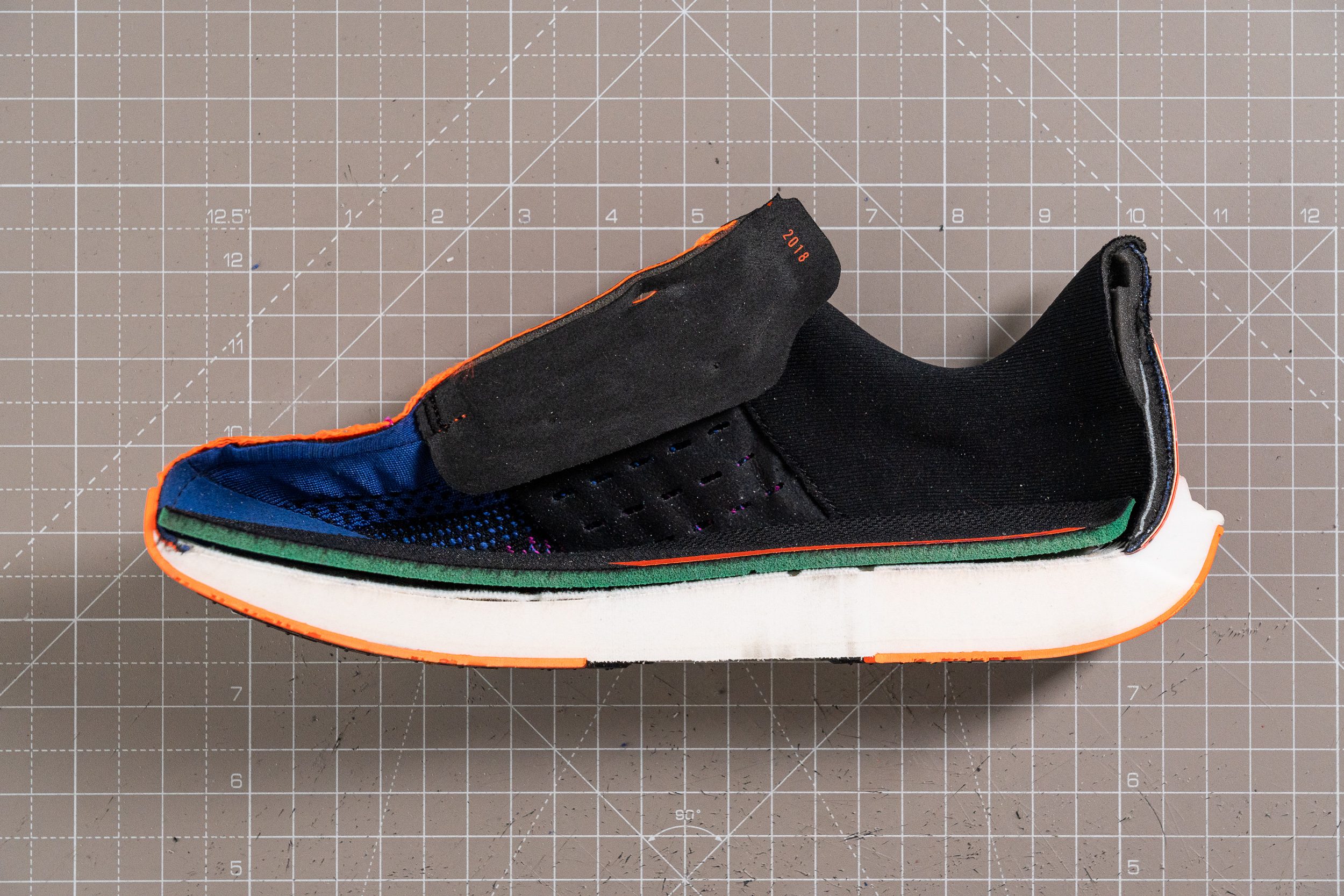
| Pegasus Plus | 9.4 mm |
| Average | 8.6 mm |
Midsole softness
If we set aside the weight, the standout feature of the Pegasus Plus is the full-length ZoomX midsole. This is a big upgrade from the ReactX-based Pegasus 41 and from the original Pegasus Turbo, which was a mix of React and ZoomX.
However, don't expect the same energetic bounce you'd find in Nike racers like the Alphafly 3. Nike tunes the ZoomX in trainers like this and the Invincible 3 for durability, which sacrifices some of the bounce. Still, it's a significant improvement in energy return compared to a regular Pegasus.
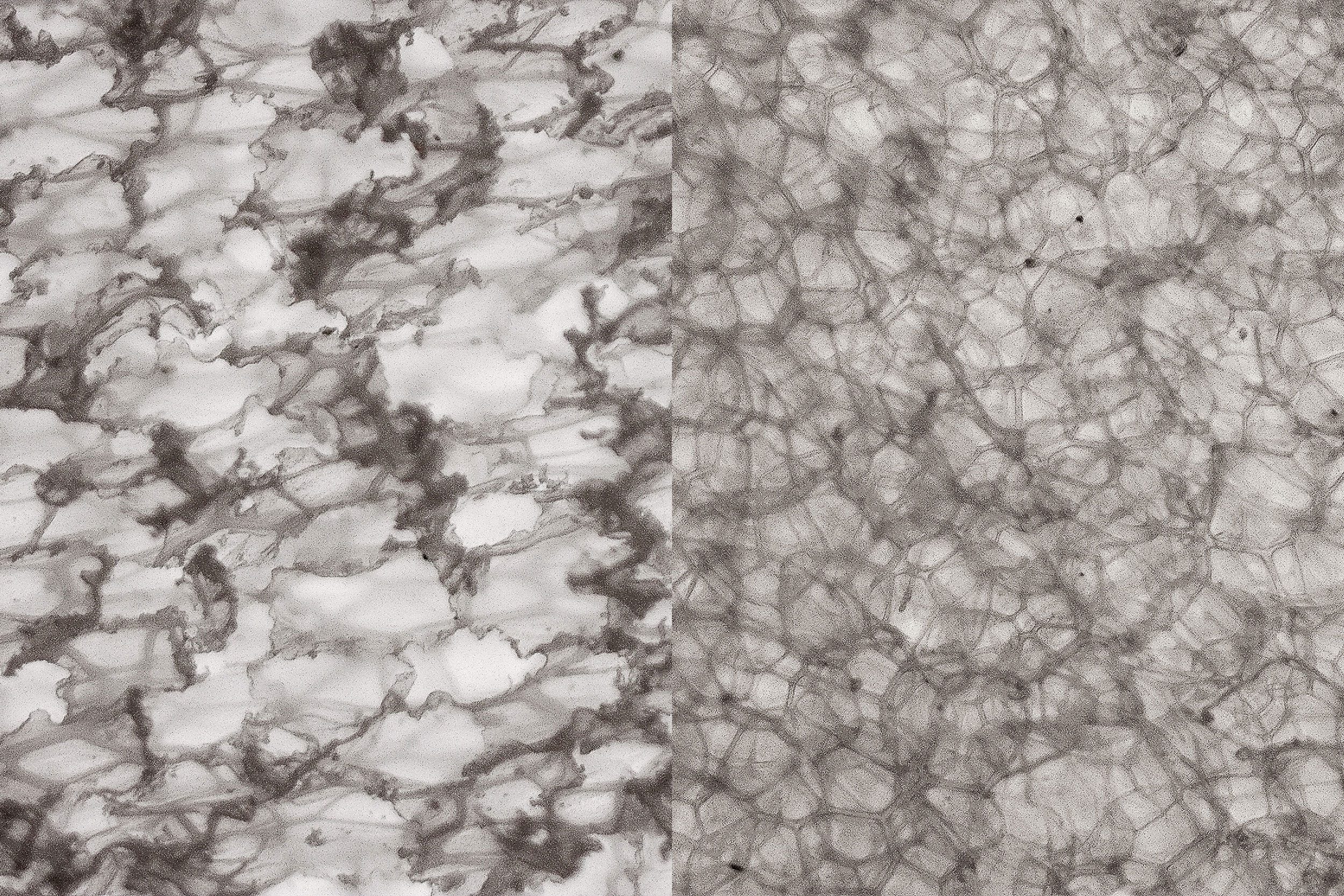
We tested the foam with our durometer and got a reading of 12.3 HA, aligning with the softness typical of ZoomX. However, the ride doesn't feel overly plush due to the outsole and the shoe's low stack height. Also, it’s worth noting—there’s no Air Zoom here, just foam.
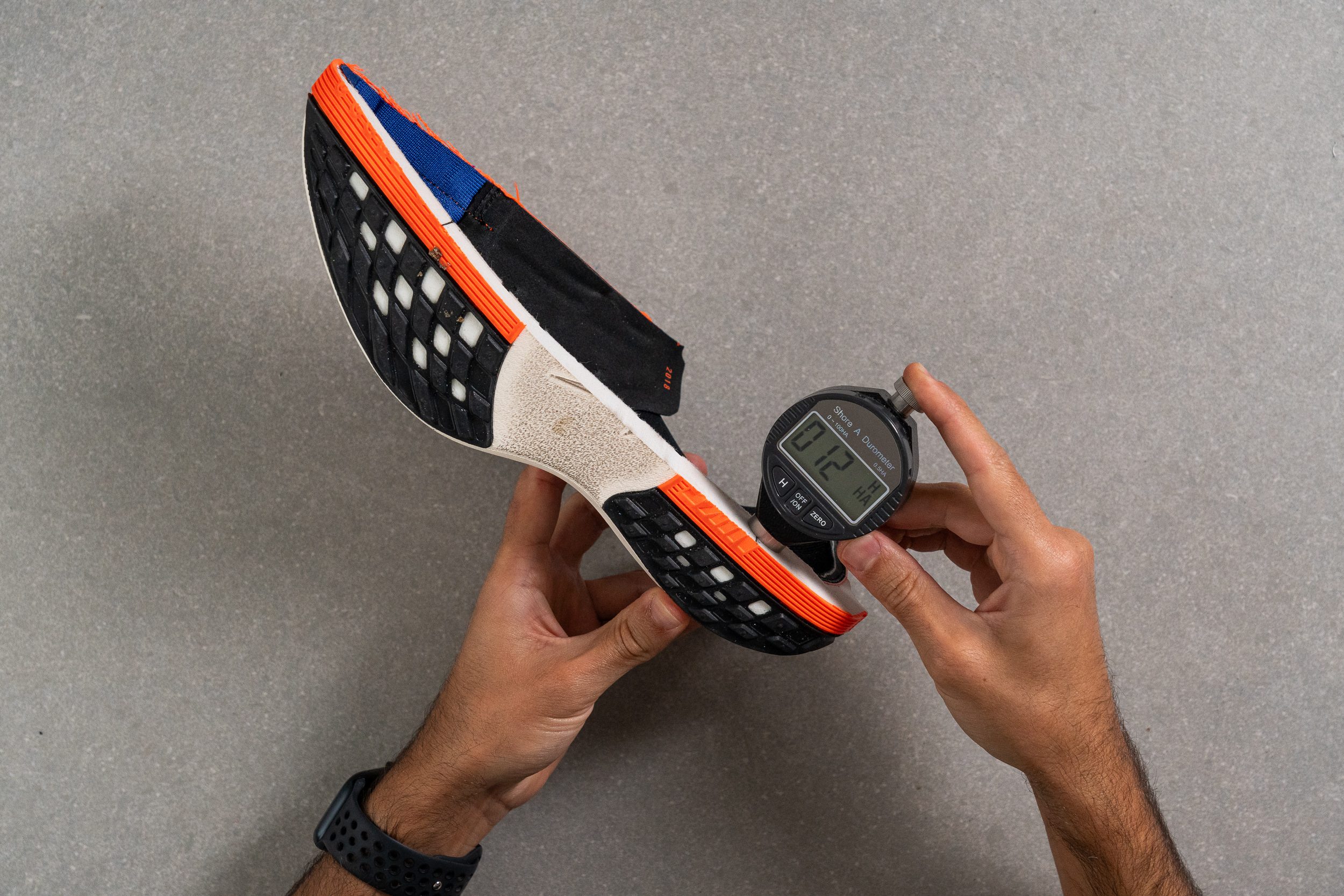
| Pegasus Plus | 12.3 HA |
| Average | 20.4 HA |
Rocker
Staying true to its roots and the Pegasus name, Nike maintains a non-rockered profile in the Pegasus Plus—a choice we believe suits the shoe’s flexible feel and moderate stack height. In our experience, this approach enhances versatility, keeping the ride smooth and natural.
We found that this design also sets the Pegasus Plus apart from the competition, which is leaning heavily toward rockered styles even in daily trainers. This traditional, flat-forefoot rocker provides a classic ride that requires a bit more effort from your foot muscles, but also helps strengthen them over time.
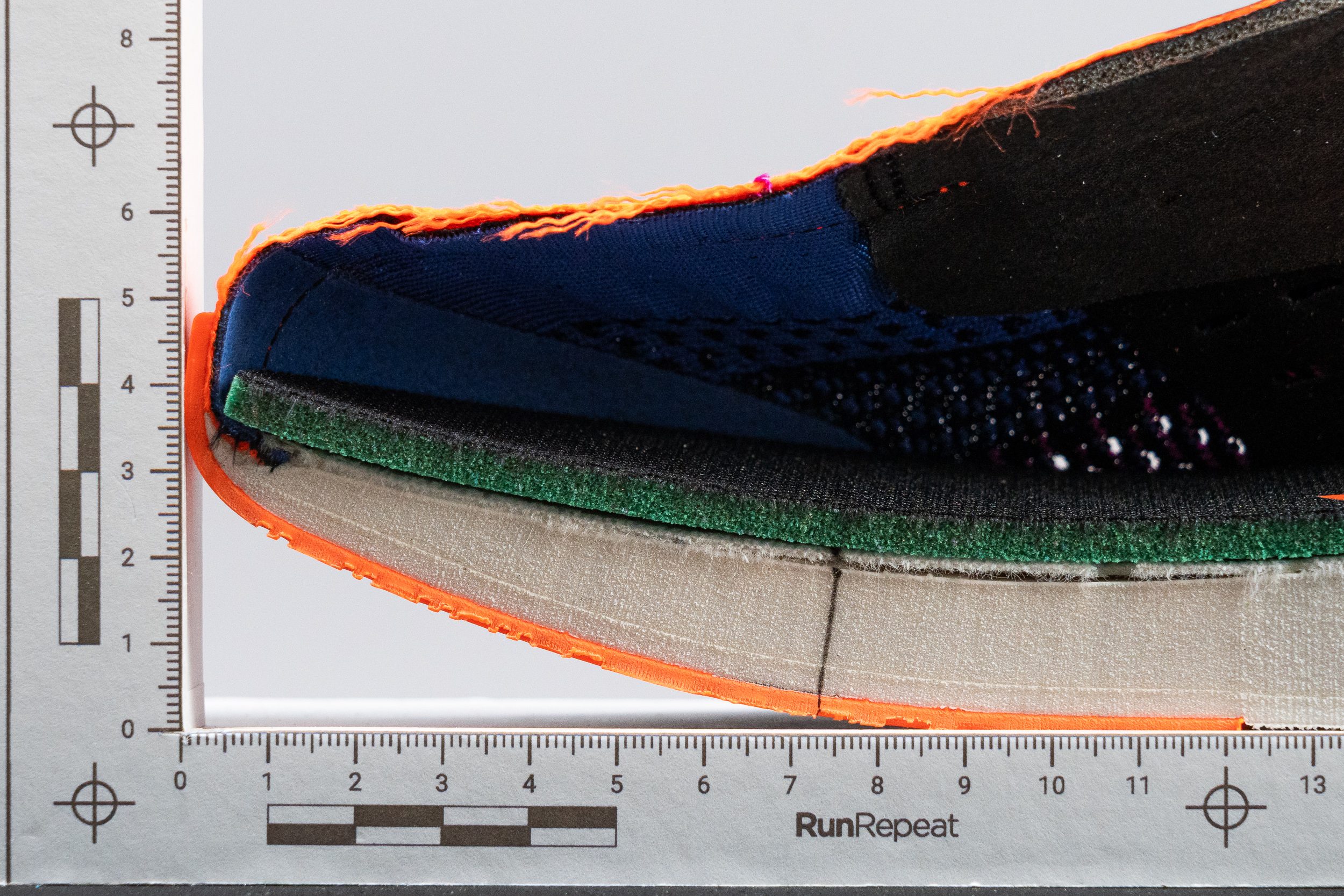
A real Turbo?
The anticipation for this shoe was huge, especially after the Pegasus Turbo Next Nature flopped, with many feeling of us thinking that Nike just used the name to cash in on nostalgia.
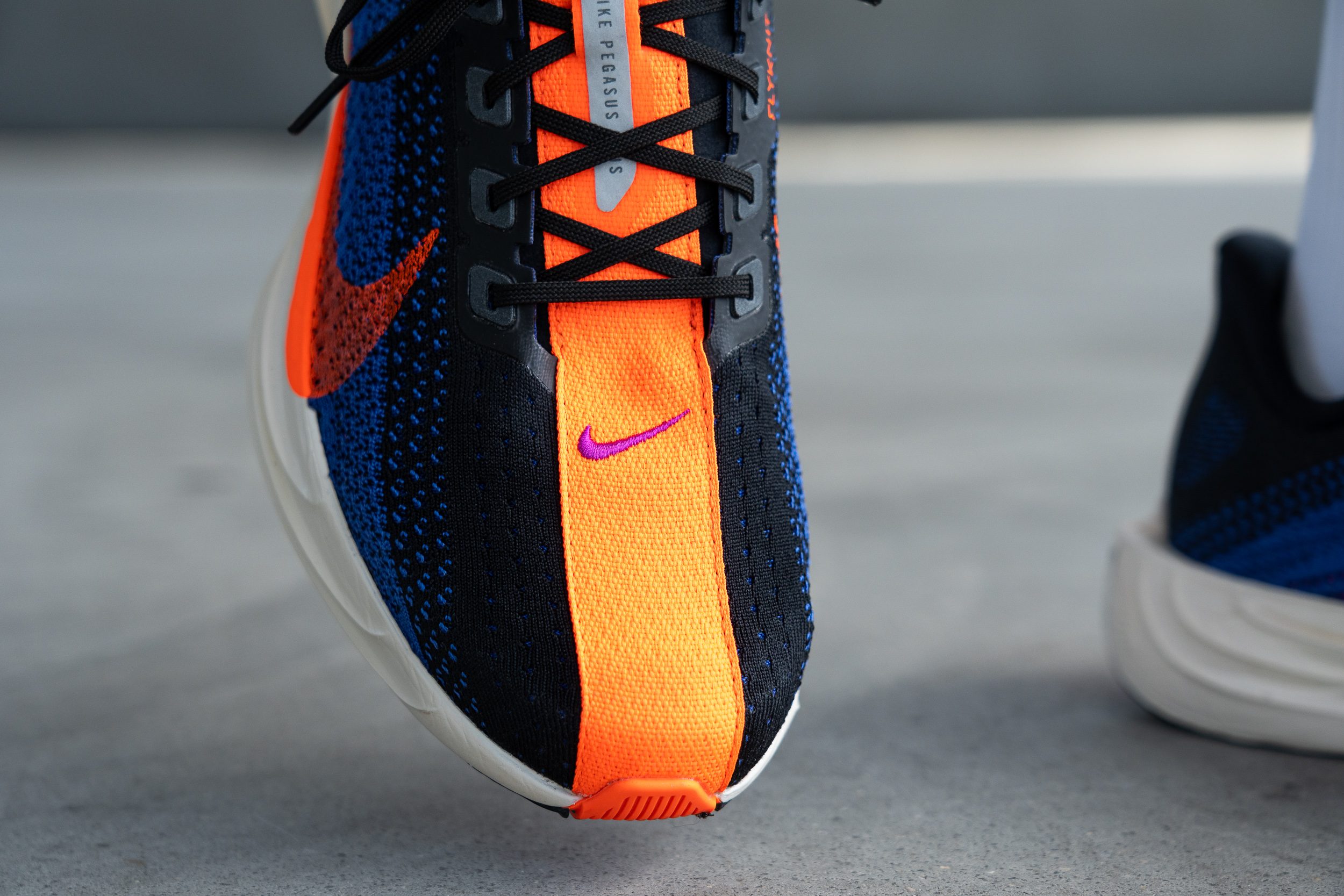
The Pegasus Plus was supposed to fix that—and to some extent, it does. But there's a catch—we're not in 2018 anymore.
Six years ago, the Pegasus 35 Turbo, with its now paper-thin 28/18 mm stack height, was a game-changer, offering unmatched energy return in a training shoe and catching everyone by surprise. In contrast, the Pegasus Plus arrives in a market filled with shoes boasting more stack height at similar weights.
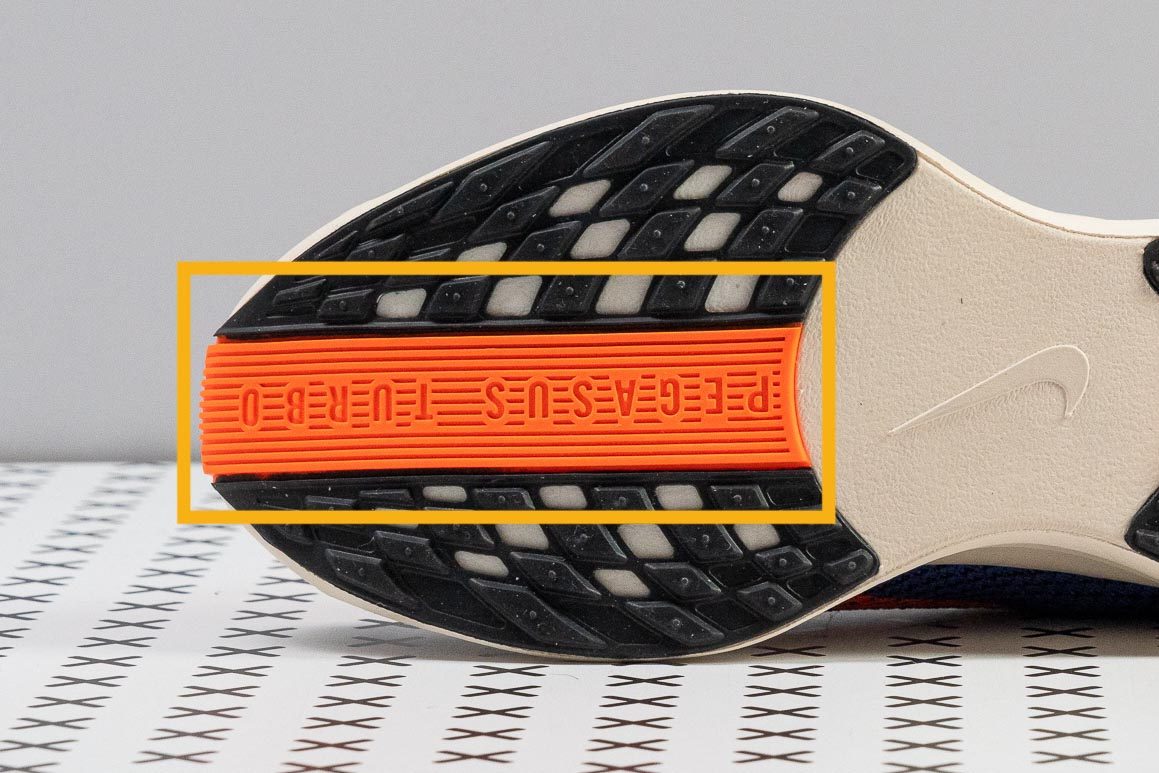
So, does it live up to the Turbo legacy? To be honest, we think it does! It's undeniably faster than a standard Pegasus and even outperforms the original Turbo 35 by the numbers. However, anyone expecting the same magic from 2018 will be disappointed. We’re in a whole new era for running shoes right now.
Size and fit
Size
Nike Pegasus Plus fits true to size (217 votes).
Width / Fit
With the Pegasus Plus, Nike retained the familiar design from its performance trainers. In our view, it feels remarkably similar to the first two generations of the popular Pegasus Turbo—delivering a snug yet comfortable experience thanks to the Flyknit upper.
After creating a gel mould of the shoe's interiors, we measured 93.9 mm at its widest point. Based on our findings, this is slightly narrower than average, making it ideal for runners with narrow feet or for those who enjoy a tighter fit for speed training.
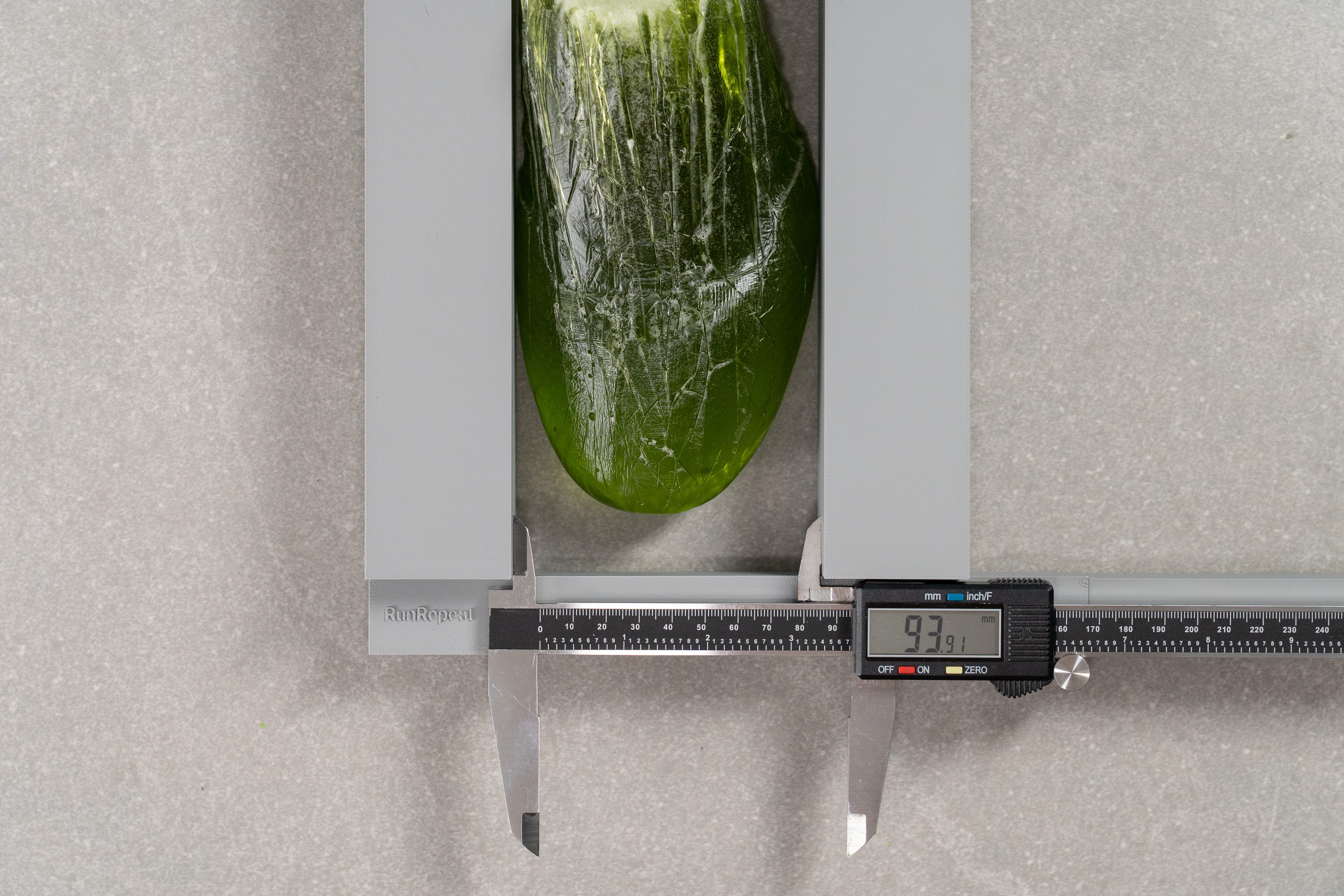
| Pegasus Plus | 93.9 mm |
| Average | 95.1 mm |
Toebox width
The big toe area is not wide-foot-friendly by any means and may even feel restrictive for runners with average feet. We measured this space at just 71.6 mm, highlighting its tapered design.
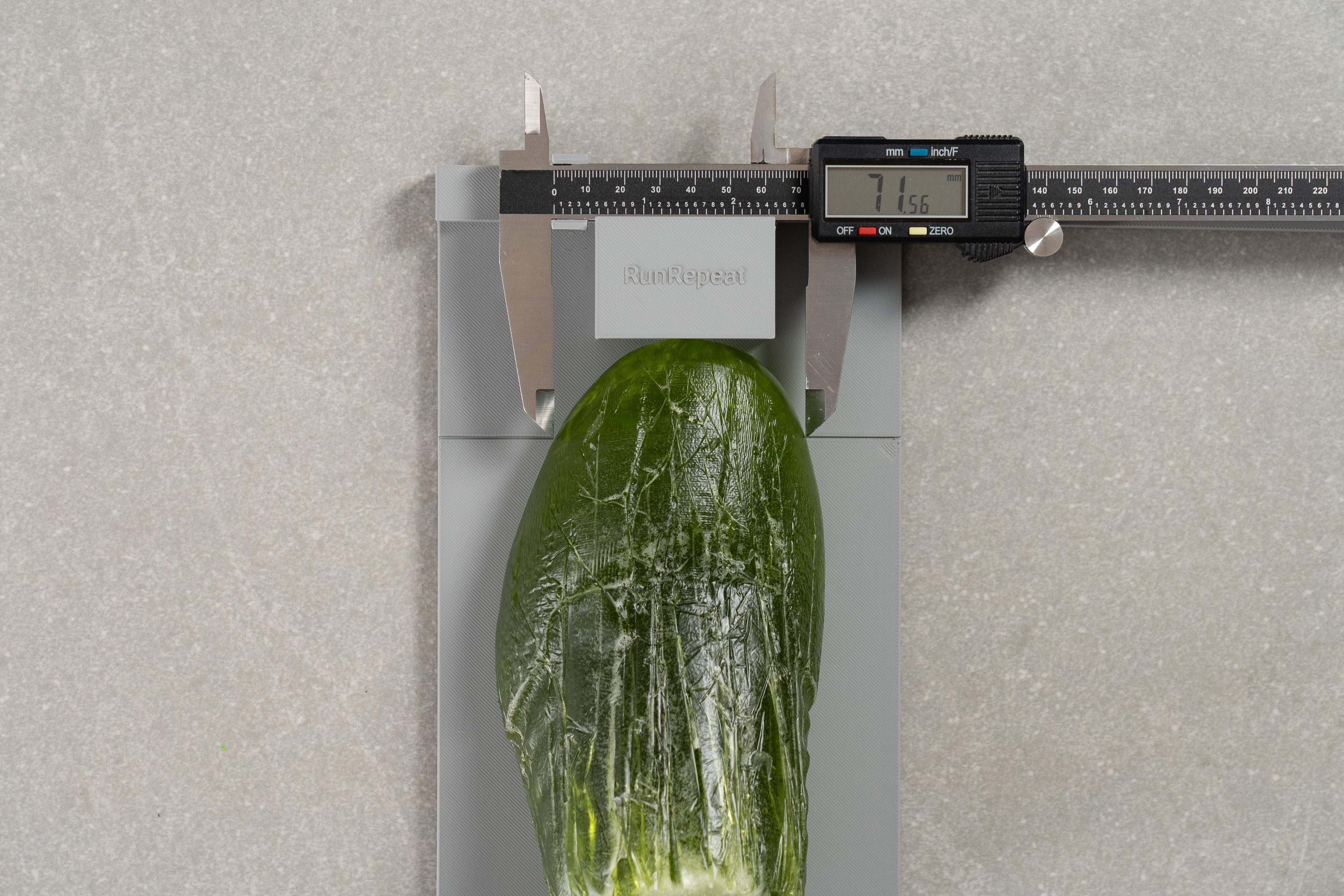
| Pegasus Plus | 71.6 mm |
| Average | 73.3 mm |
Toebox height
On the other hand, there’s plenty of vertical room for the toes, especially with the Flyknit upper, which stretches over time and never felt restrictive.
We noted a measurement of 29.3 mm—confirming its high-volume design.
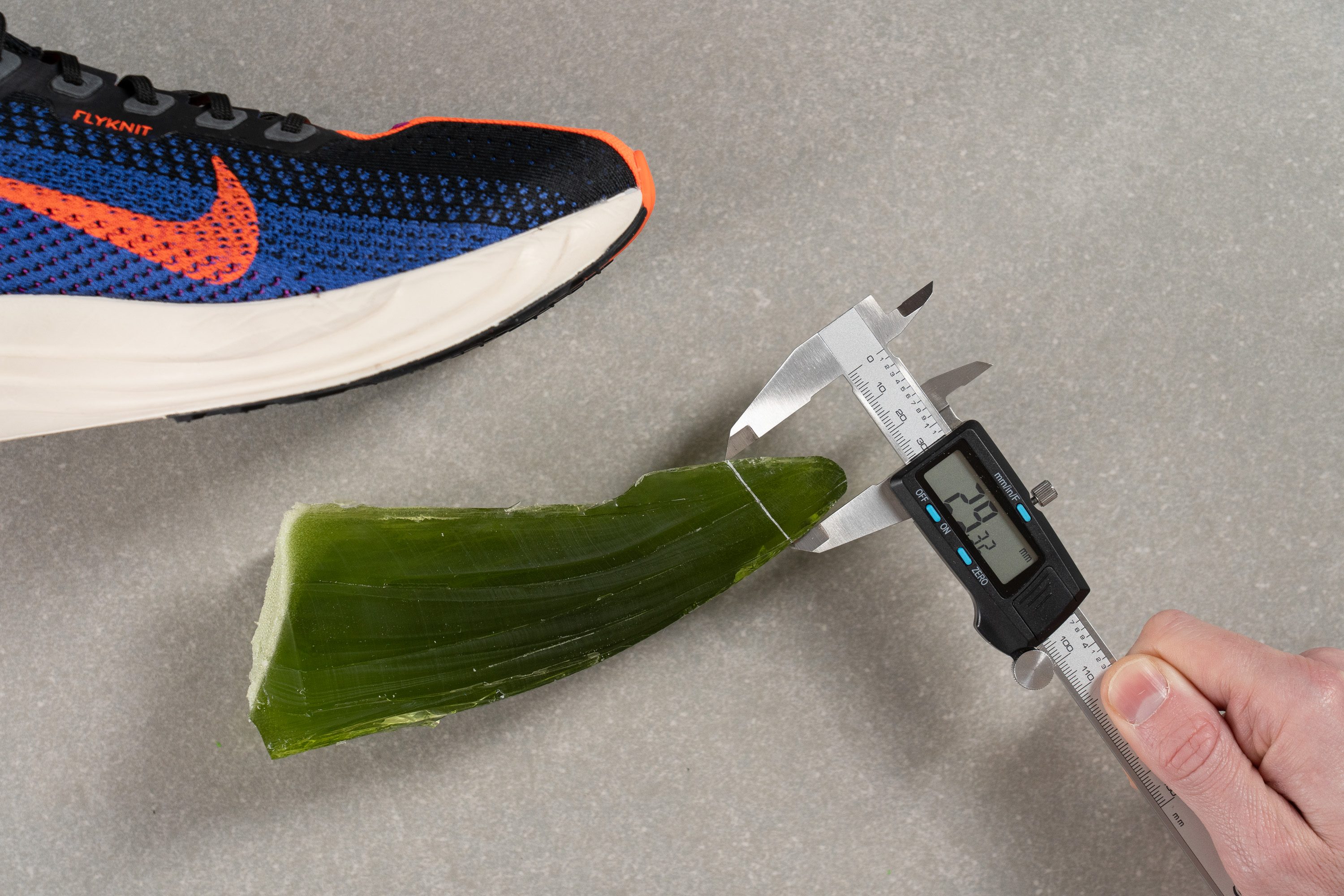
| Pegasus Plus | 29.3 mm |
| Average | 27.1 mm |
Traction / Grip
Traction test
With quite some exposed foam in the midfoot, the Pegasus Plus wasn’t set up for super-strong traction, yet we discovered a decent 0.42 in our SATRA TM144 test—plenty for daily runs! Grip in dry conditions is good, while wet performance is reliable.
We can confirm that it handles changing weather, but it won’t reach top-tier status for those chasing next-level wet grip, of course.
| Pegasus Plus | 0.42 |
| Average | 0.48 |
Outsole design
The Pegasus Plus outsole stands out from most Nike designs thanks to its segmented layout and unique central racing stripe, stretching from toebox to heel.
We noticed extensive rubber coverage in the forefoot and heel, but the midfoot remains fully exposed. This may not be ideal for runners who put pressure on that zone, as durability could suffer over time.

Flexibility / Stiffness
One of the standout features of the Pegasus Plus is its impressive flexibility, which sets it apart from most tempo trainers—especially because it lacks a plate. In our 30-degree bend test, it required just 10.5N, an exceptionally low score.
While some may prefer the added responsiveness and stability of a nylon or carbon plate, we believe this design is perfect for runners looking to build foot strength and enjoy a more natural ride.
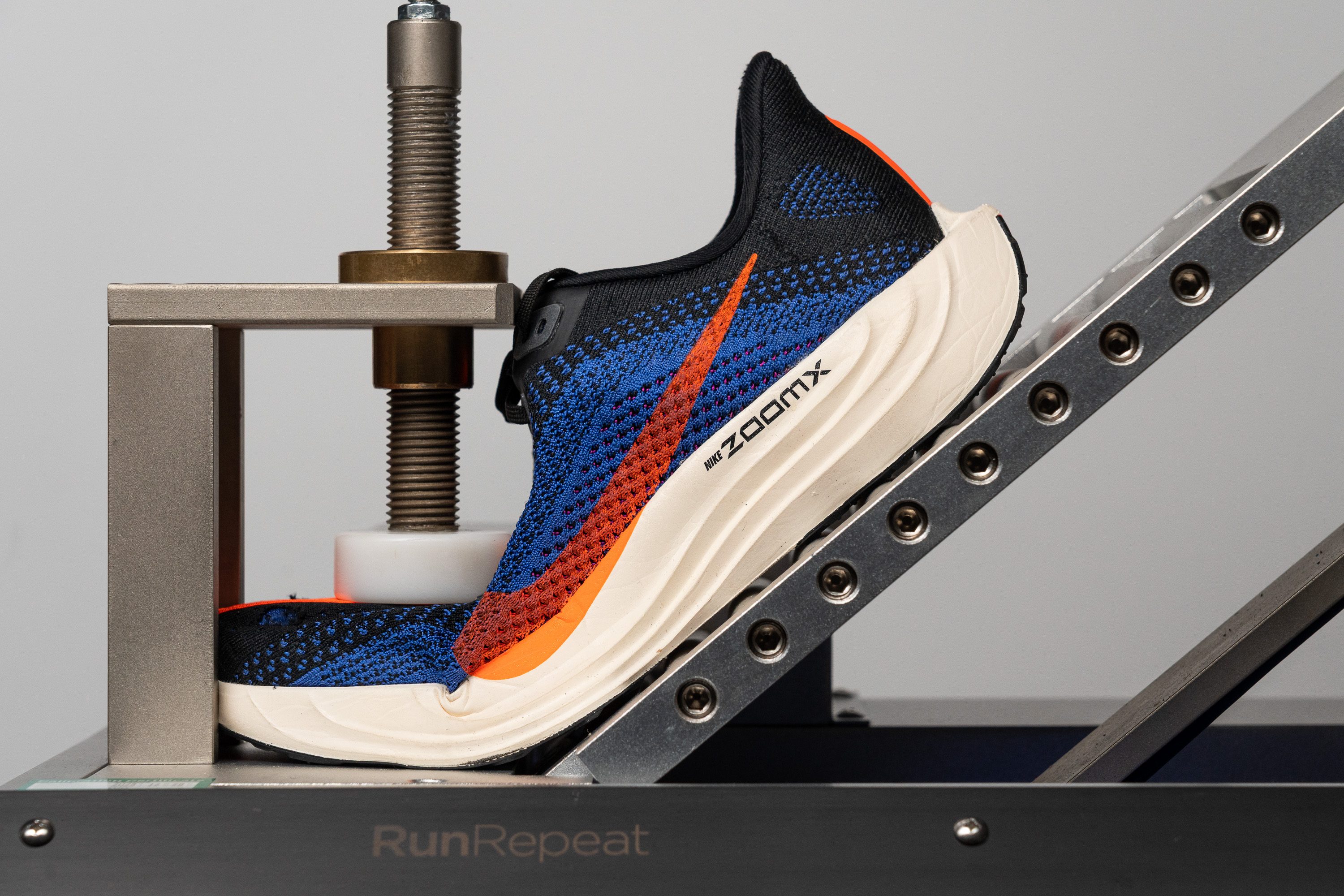
| Pegasus Plus | 10.5N |
| Average | 15.3N |
Stiffness in cold (%)
After leaving the Peg Plus in the freezer for another 20 minutes, we found almost no change, with only an 8.7% increase in stiffness.
| Pegasus Plus | 9% |
| Average | 33% |
Weight
We already stated that this shoe was likely intended to be named the Pegasus Turbo 4, but Nike opted for the "Plus" to align with their simplified naming structure coming for 2024 and 2025. One of the "Plus" features over the regular Pegasus is its lightness.
While we tested the Pegasus 41 at 9.9 oz (281g) in our lab, the Pegasus Plus comes in at just 8.6 oz (244g). We found that the lighter ZoomX foam truly makes a world of difference, especially at tempo paces, enhancing that nimble, fast feel.

This weight reduction is critical, as the Peg Turbo 35 was really known for its lower weight, setting it apart from the standard model!
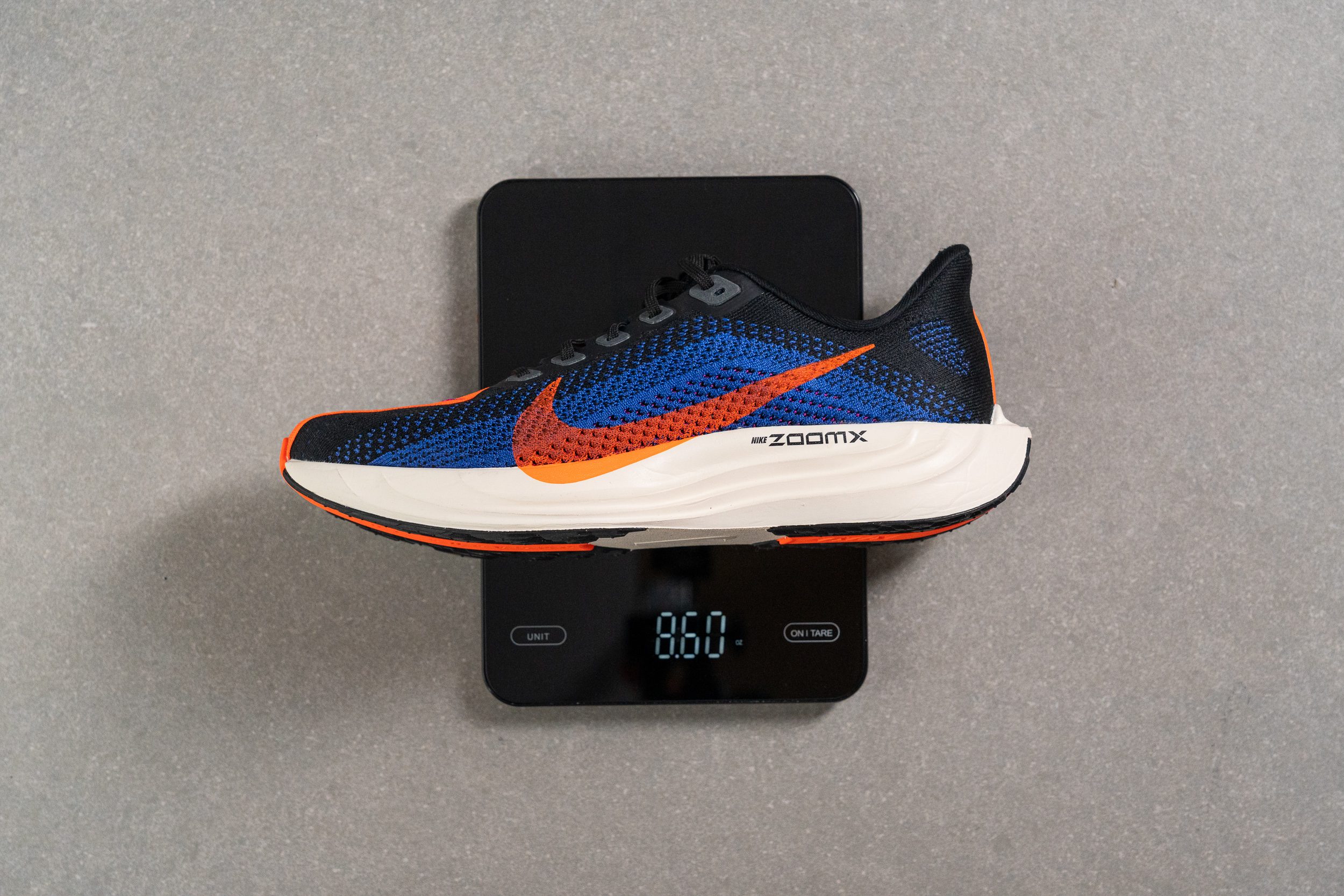
| Pegasus Plus | 8.6 oz (244g) |
| Average | 9.3 oz (264g) |
Breathability
We always start with a breathability check, and for the Pegasus Plus, we couldn’t wait to fire up the smoke machine. At first glance, it doesn’t seem very breathable—the dense Flyknit upper and the iconic Turbo stripe appear to limit airflow. But we had to put it through the real test.
What we found wasn’t as bad as we initially thought, but it wasn’t great either. In our assessment, it scored a 3/5—right in the middle of the road. Without the stripe, it could've edged closer to a 4/5. That said, the stripe looks next-level cool!
Sometimes the simplest tests offer the most insight. By moving the upper over a powerful light, we could easily identify where air could escape and where it couldn’t.
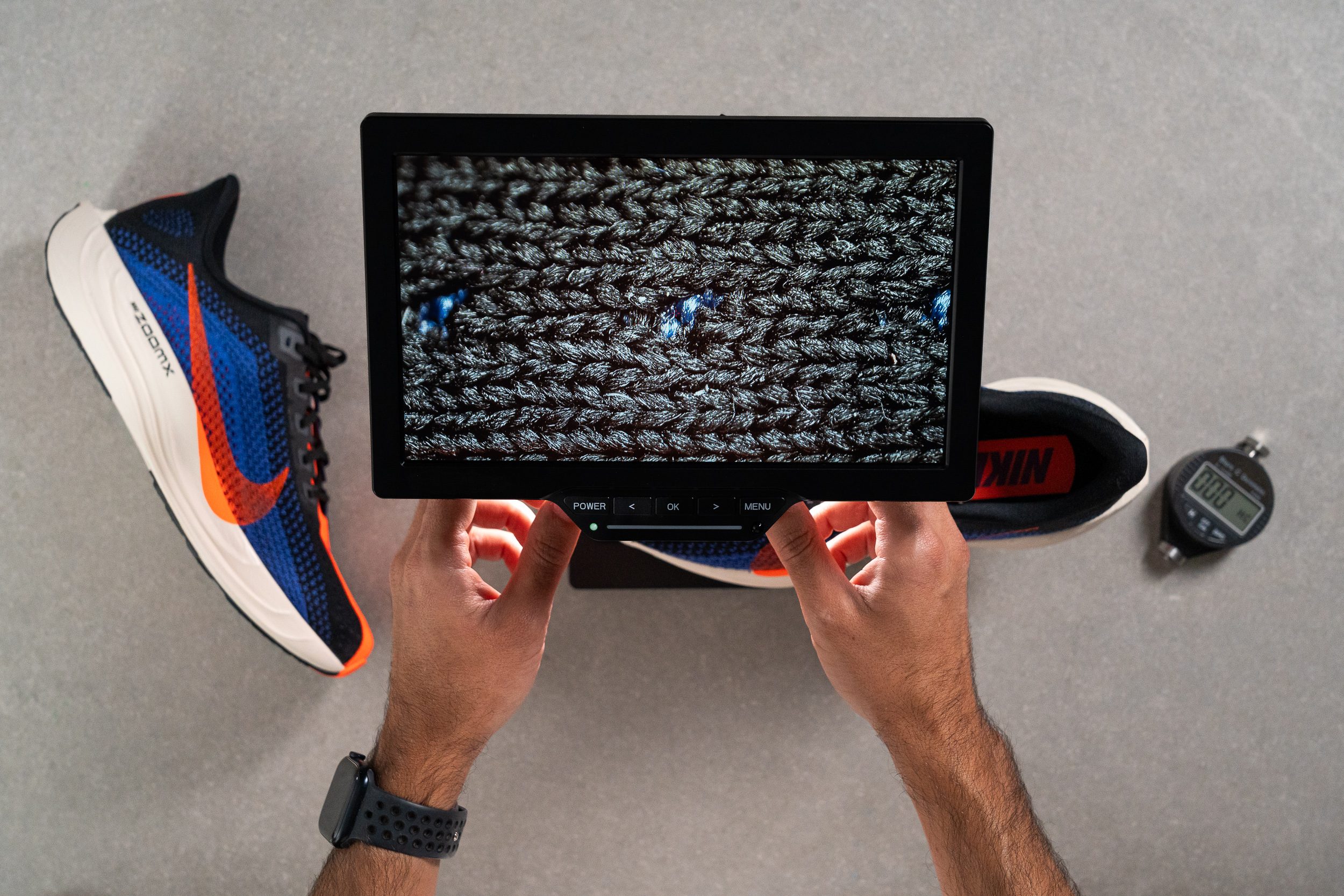
Next, we brought out the microscope, taking two shots. First, we examined the Flyknit material, where we found one of the ventilation holes that honestly didn’t seem very effective.
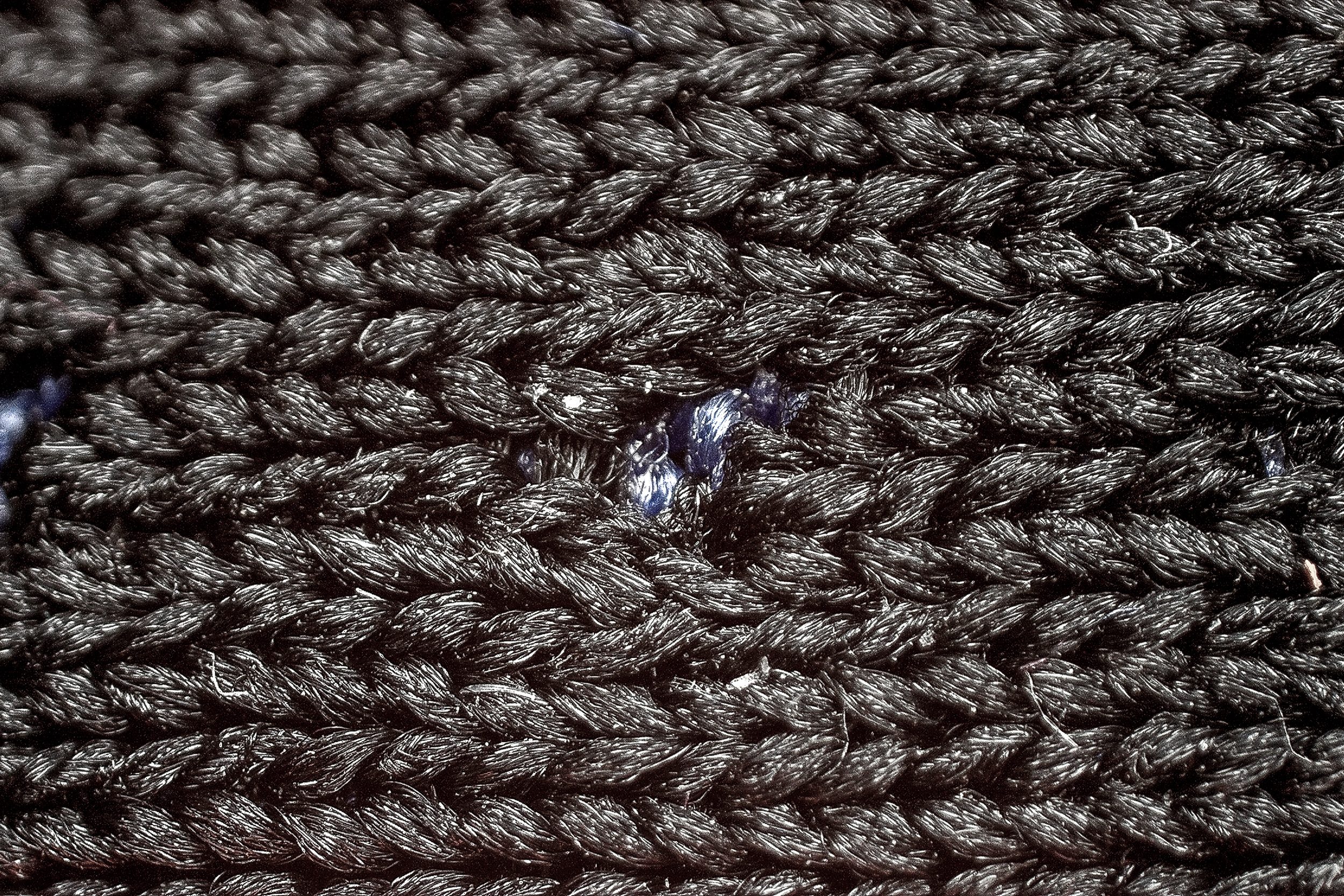
We also inspected the stripe—it’s dense and will likely enhance durability, but more on that later.
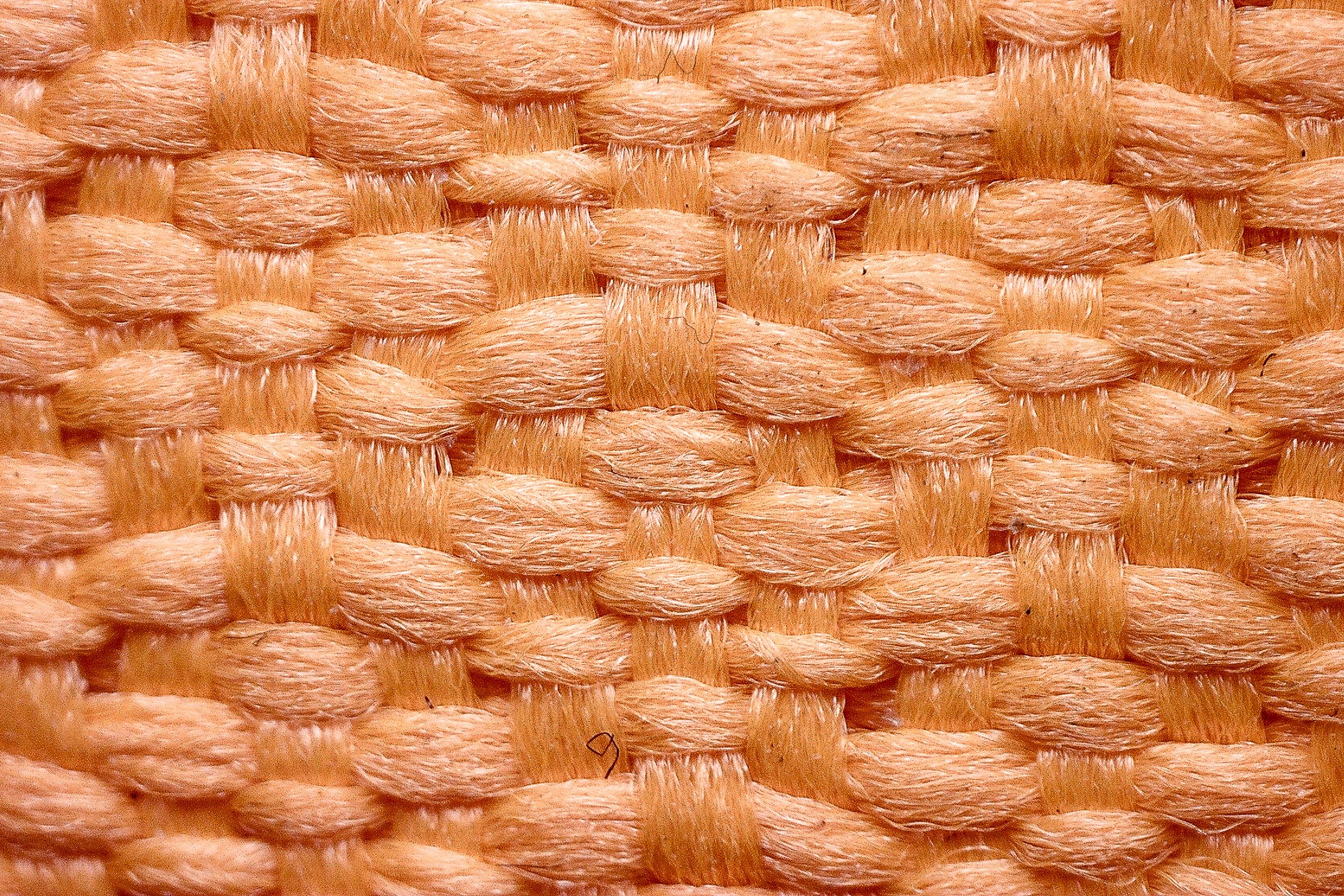
We also evaluated the entire upper with our hands. The quality of this version of Flyknit is solid, and the heel padding is adequate.
Finally, based on our examination, it's important to warn that the Pegasus Plus isn’t sockless-friendly. Those who prefer running without socks might want to reconsider it and get the ASICS Noosa Tri 16 instead.
| Pegasus Plus | 3 |
| Average | 3.7 |
Stability
Lateral stability test
Those seeking stability should look elsewhere—this is a purely neutral shoe that isn’t designed for runners with pronation or supination issues. We found no stability features here, and the shoe’s narrow build promotes agility and speed.
In our experience, the design leans heavily toward delivering a fast, agile ride rather than support—definitely giving off those Turbo vibes!
Torsional rigidity
We found it slightly stiffer than a regular Pegasus, but still flexible at 3/5. In our view, adding some horizontal grooves to the outsole could have boosted flexibility even more, though the score feels well-balanced. This level of stiffness seems like a good fit for the Pegasus Plus to us, especially as it’s designed to go faster than the regular version.
| Pegasus Plus | 3 |
| Average | 3.5 |
Heel counter stiffness
The heel counter was a bit surprising, as we found it slightly stiffer than usual for daily trainers or tempo shoes, scoring 4/5. Luckily, it's well-padded and not uncomfortable, but runners with Haglund's deformity or heel sensitivity might want to explore other options like the Adidas Adizero SL2.
| Pegasus Plus | 4 |
| Average | 2.9 |
Midsole width - forefoot
You may have noticed from our forefoot measurement picture below that the Pegasus Plus has a very pointy, race-oriented shape and isn’t particularly wide. Our measurement came in at 116.5 mm in the forefoot, similar to most daily trainers.
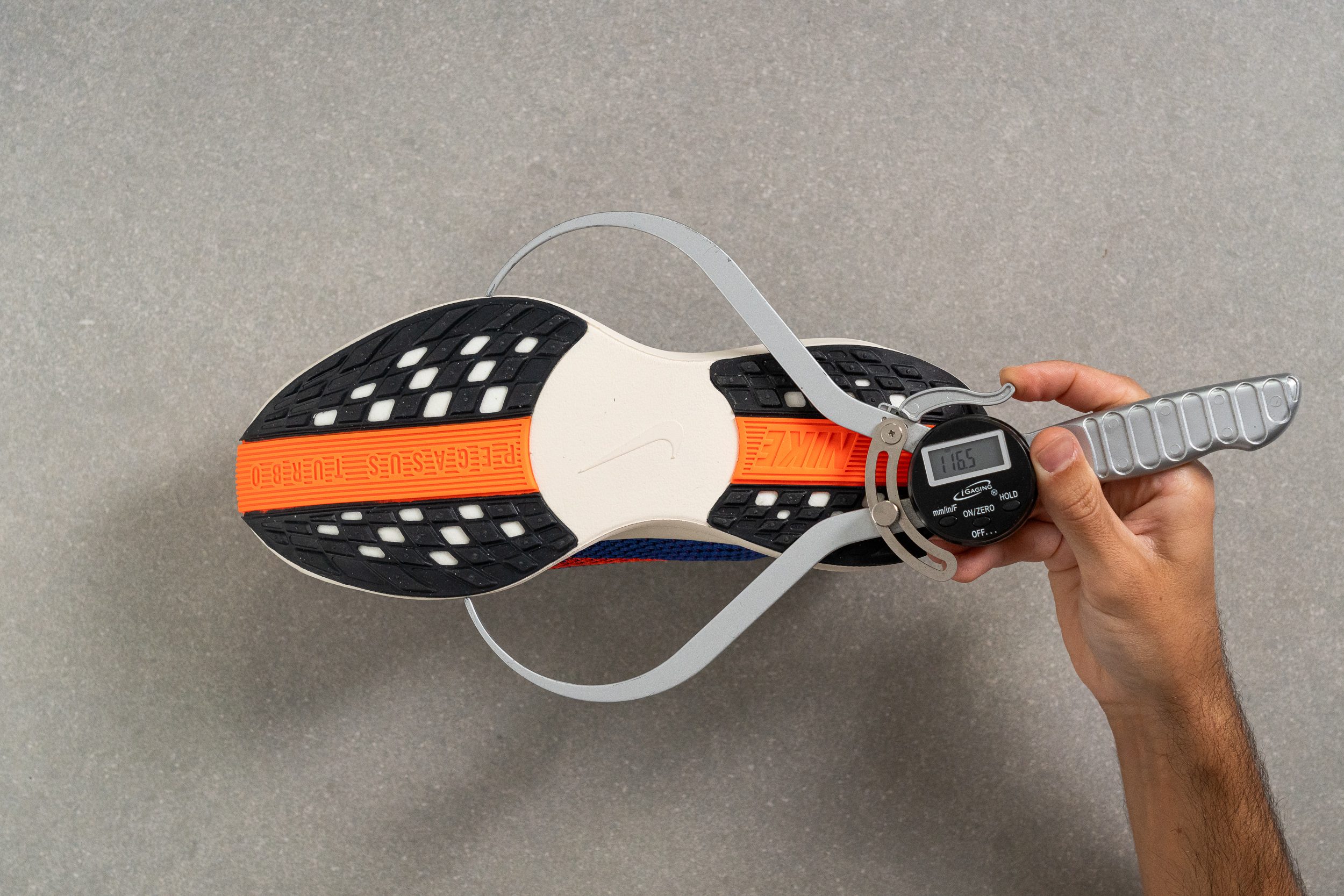
| Pegasus Plus | 116.5 mm |
| Average | 114.4 mm |
Midsole width - heel
The heel, measuring just 89.5 mm, makes this shoe a bit unstable for runners who rely heavily on the rearfoot during landing.
We believe it might feel slightly wobbly for some, though midfoot and forefoot strikers, or those with a neutral running technique, shouldn't have any issues.
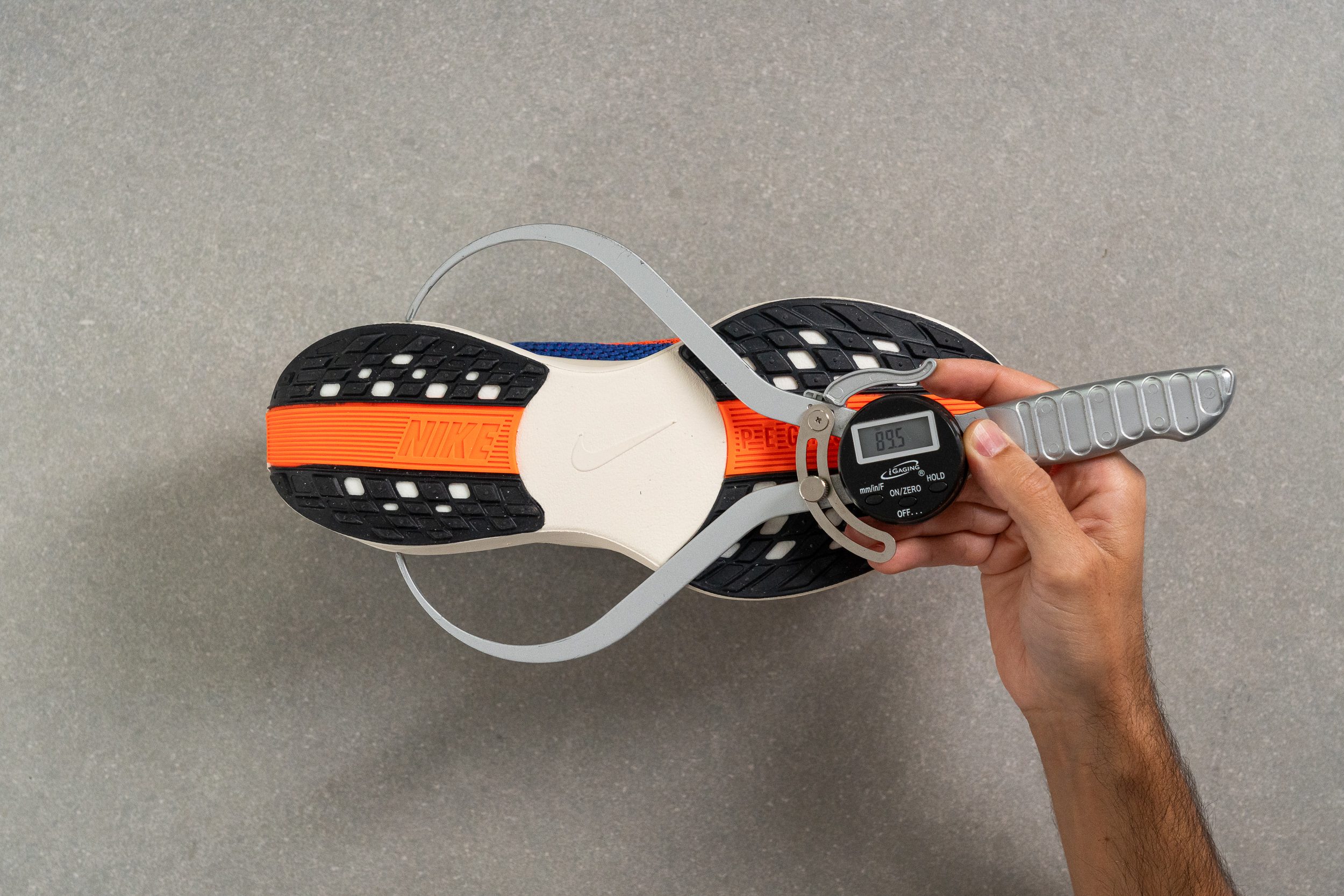
| Pegasus Plus | 89.5 mm |
| Average | 90.7 mm |
Durability
Toebox durability
On the durability side, knit uppers often raise concerns since they generally wear out faster than mesh fabric—a topic we've covered extensively in our guide about uppers.
However, the Pegasus Plus held up well in our Dremel test, earning a solid 3 out of 5 and outperforming many engineered mesh uppers.
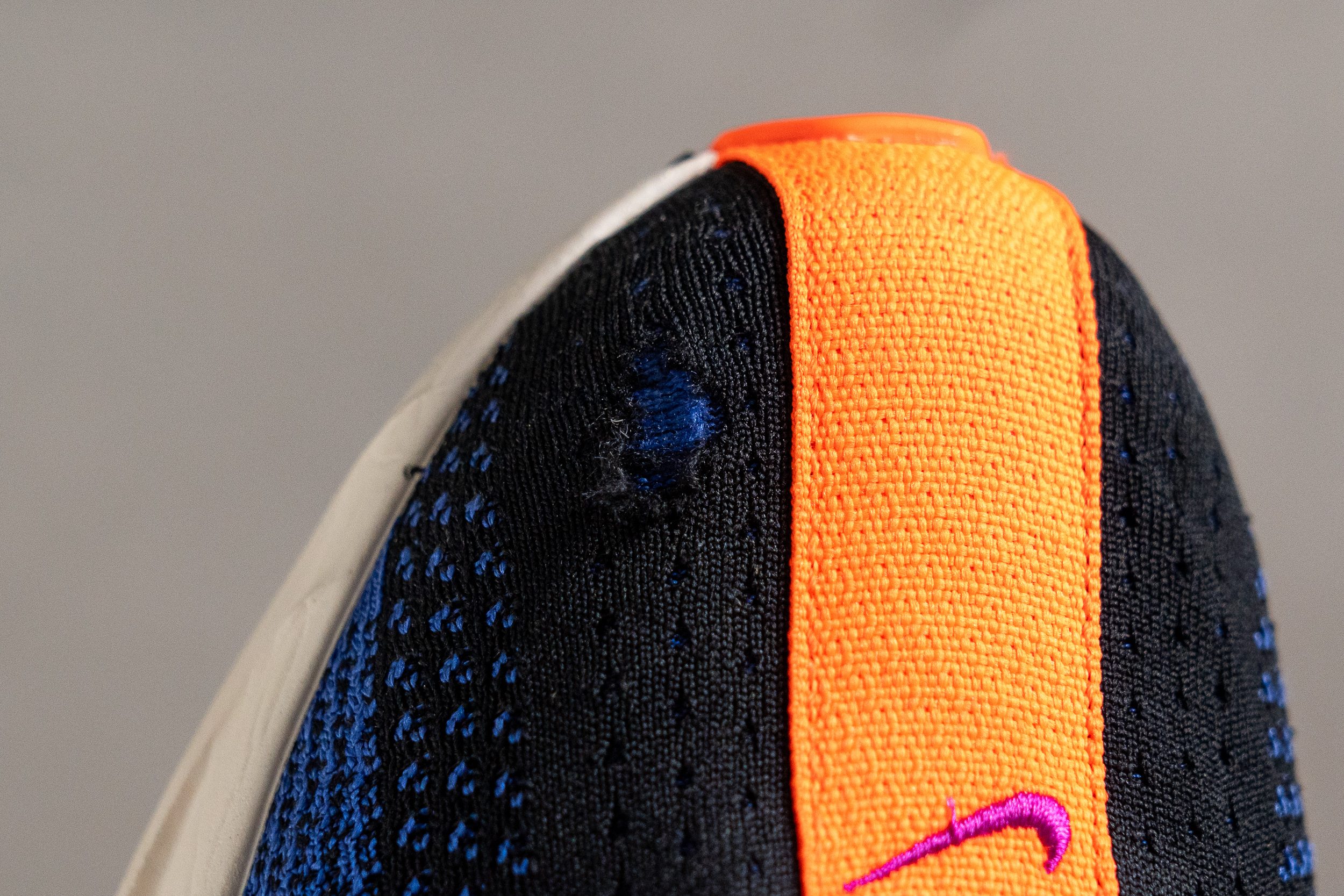
| Pegasus Plus | 3 |
| Average | 2.6 |
Heel padding durability
The heel area showed even better performance, where we found the Peg Plus to demonstrate outstanding durability.
In our testing, the heel lining displayed top-notch resistance, earning a flawless 5 out of 5 rating. This rock-solid performance reassured us that the shoe can endure significant wear for those who often create holes with their Achilles tendon.
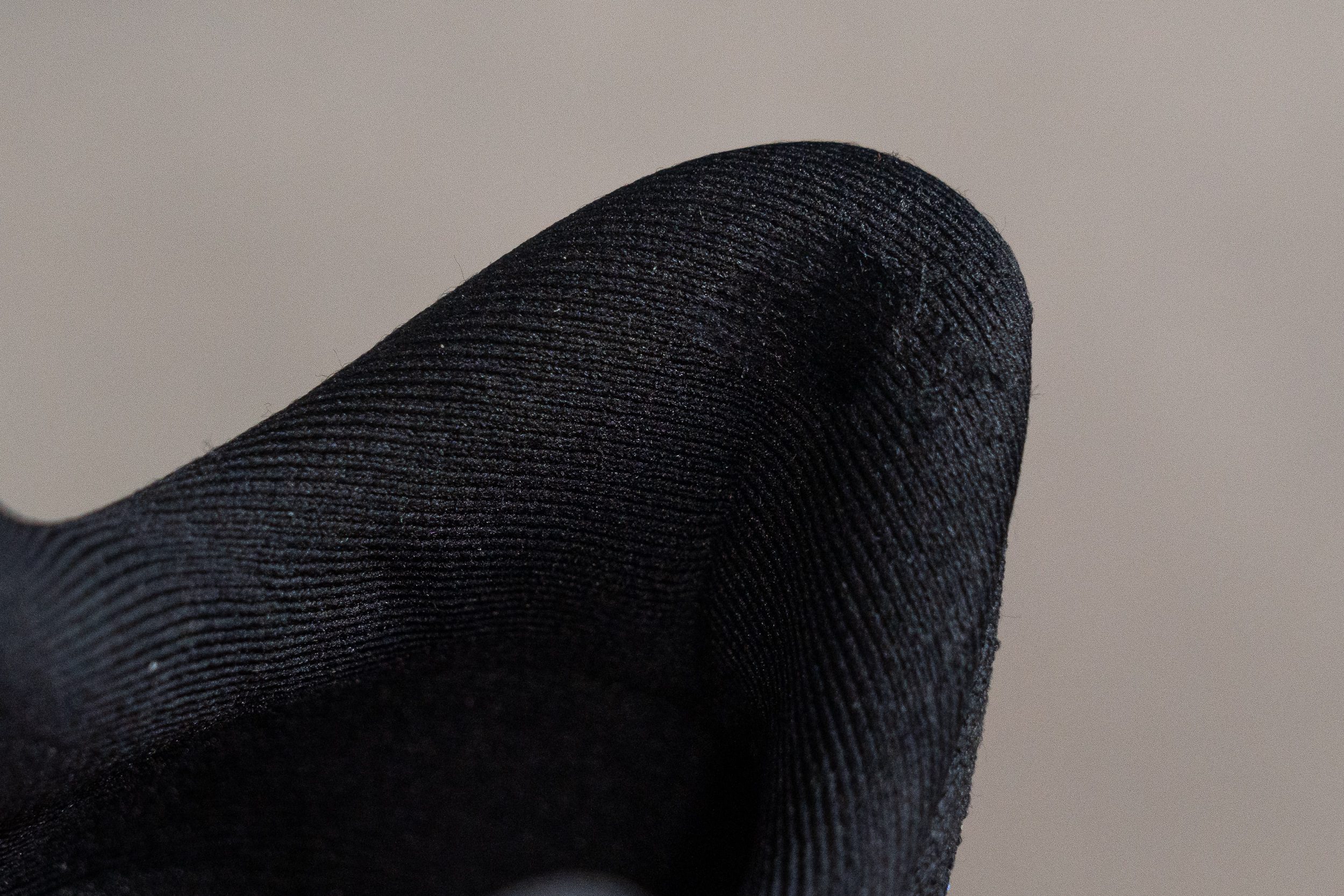
| Pegasus Plus | 5 |
| Average | 3.4 |
Outsole hardness
The outsole of the Pegasus Plus stands out from most Nike designs, making it worth a closer look.

However, the midfoot lacks rubber coverage, which could be a concern if you tend to wear down shoes in that area. As for the 80.0-HC rubber, it’s average in hardness. Nike opted for a classic waffle pattern with plenty of cutouts to reduce weight, which aligns with the shoe's Turbo DNA heritage.
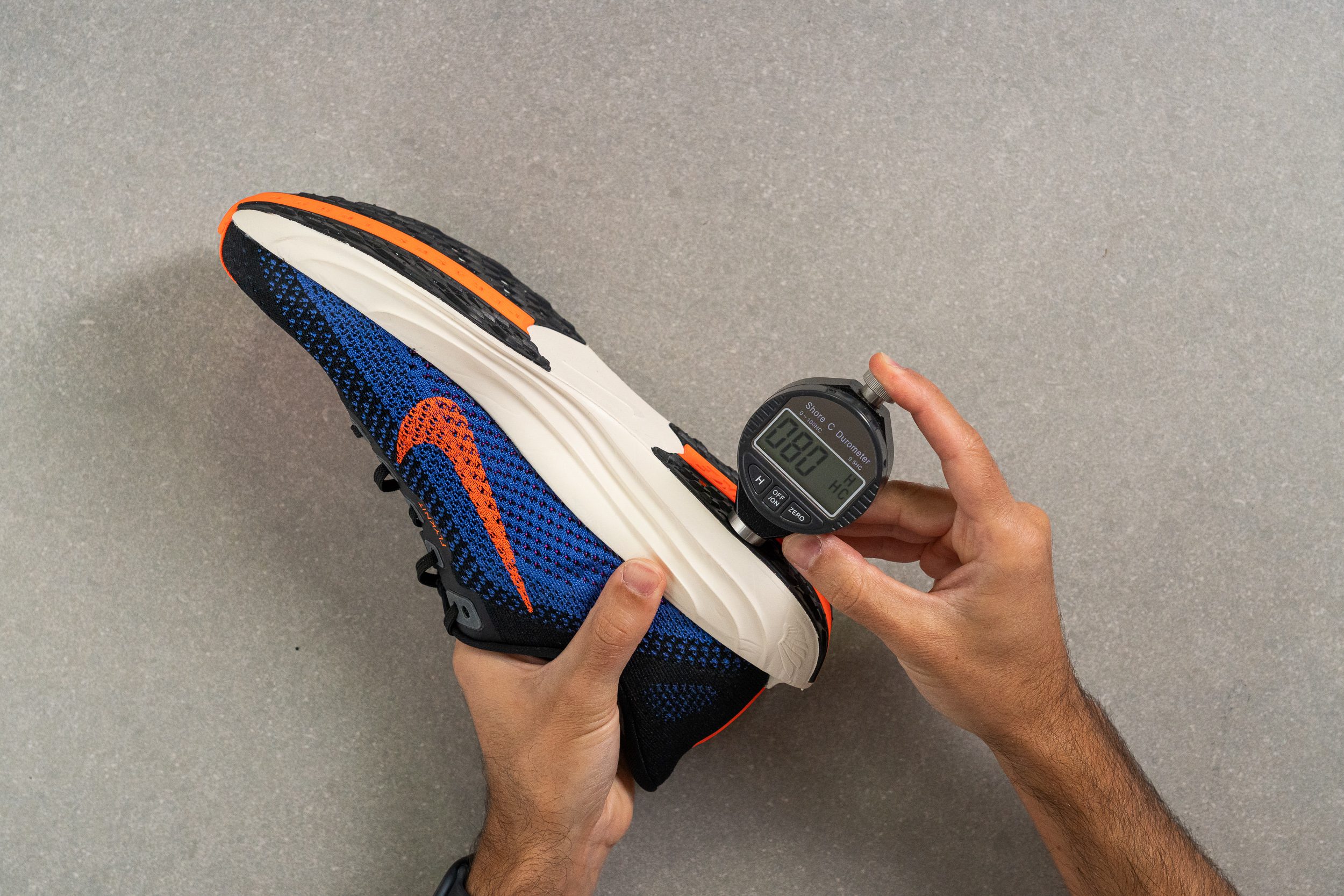
| Pegasus Plus | 80.0 HC |
| Average | 79.2 HC |
Outsole durability
We weren’t entirely satisfied with the outsole durability test, as it didn’t perform as well as other Nike models. The result of 1.2 mm of wear is below what we usually find in most daily trainers.
However, it’s not all bad. While this falls short of tougher options, we believe it should still hold up for those logging hundreds of miles in the Pegasus Plus. If durability is a concern for you, check out our detailed results chart to compare it with other choices!

| Pegasus Plus | 1.2 mm |
| Average | 1.1 mm |
Outsole thickness
We found the outsole thickness to be 2.7 mm, which is slightly below average and may lead to early wear for some runners, though we believe it should be sufficient for most.
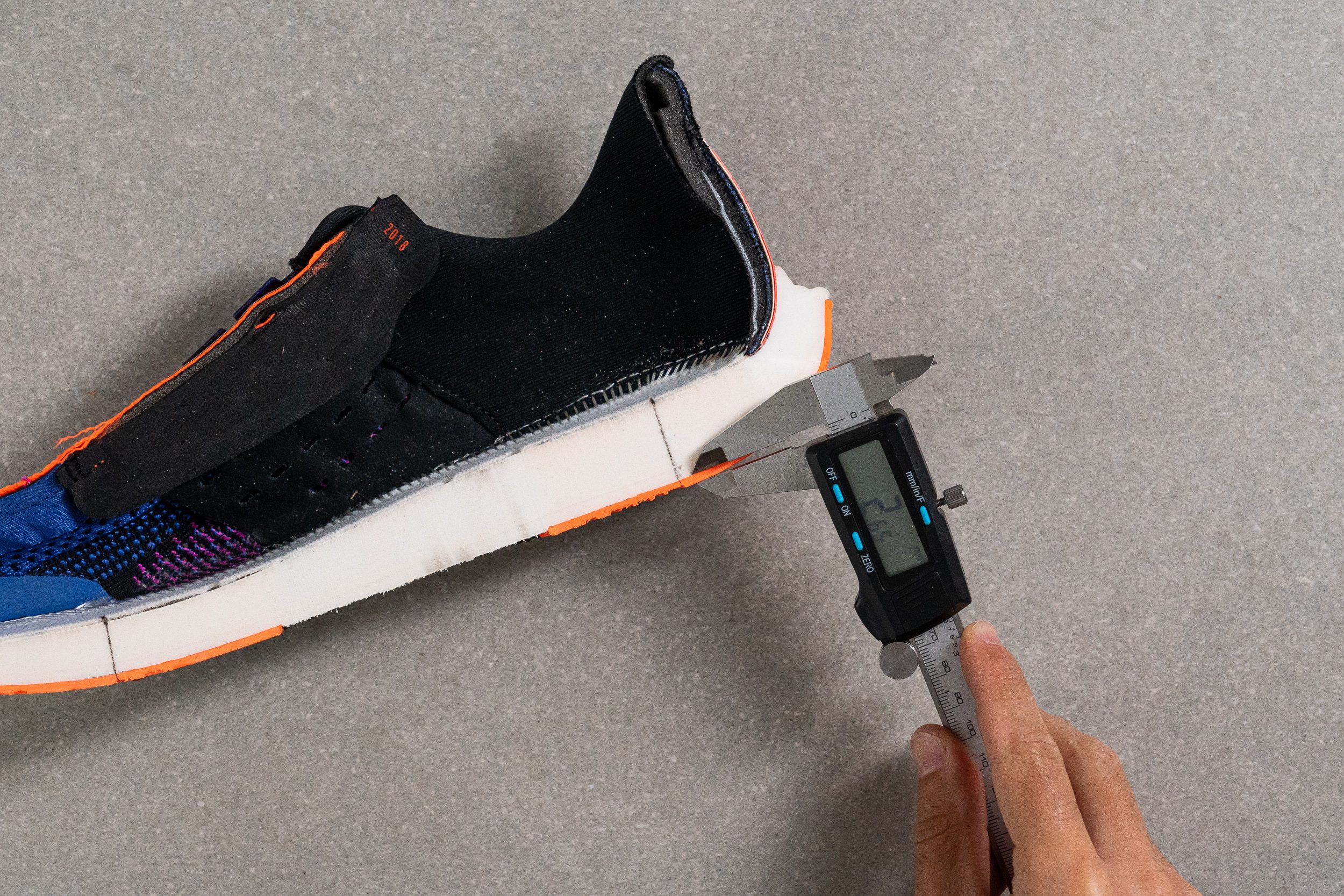
| Pegasus Plus | 2.7 mm |
| Average | 3.2 mm |
Misc
Insole thickness
While most aspects of the Pegasus Plus are clear improvements over the regular model, justifying its higher price, the insole isn't one of them. It's a basic 4.4-mm EVA insole that doesn’t offer anything remarkable.

| Pegasus Plus | 4.4 mm |
| Average | 4.5 mm |
Removable insole
The insole provided by Nike is nothing remarkable, and since it's not glued down, you can easily remove it in seconds—as we did. However, if you replace it, you'll miss out on the iconic stripe!
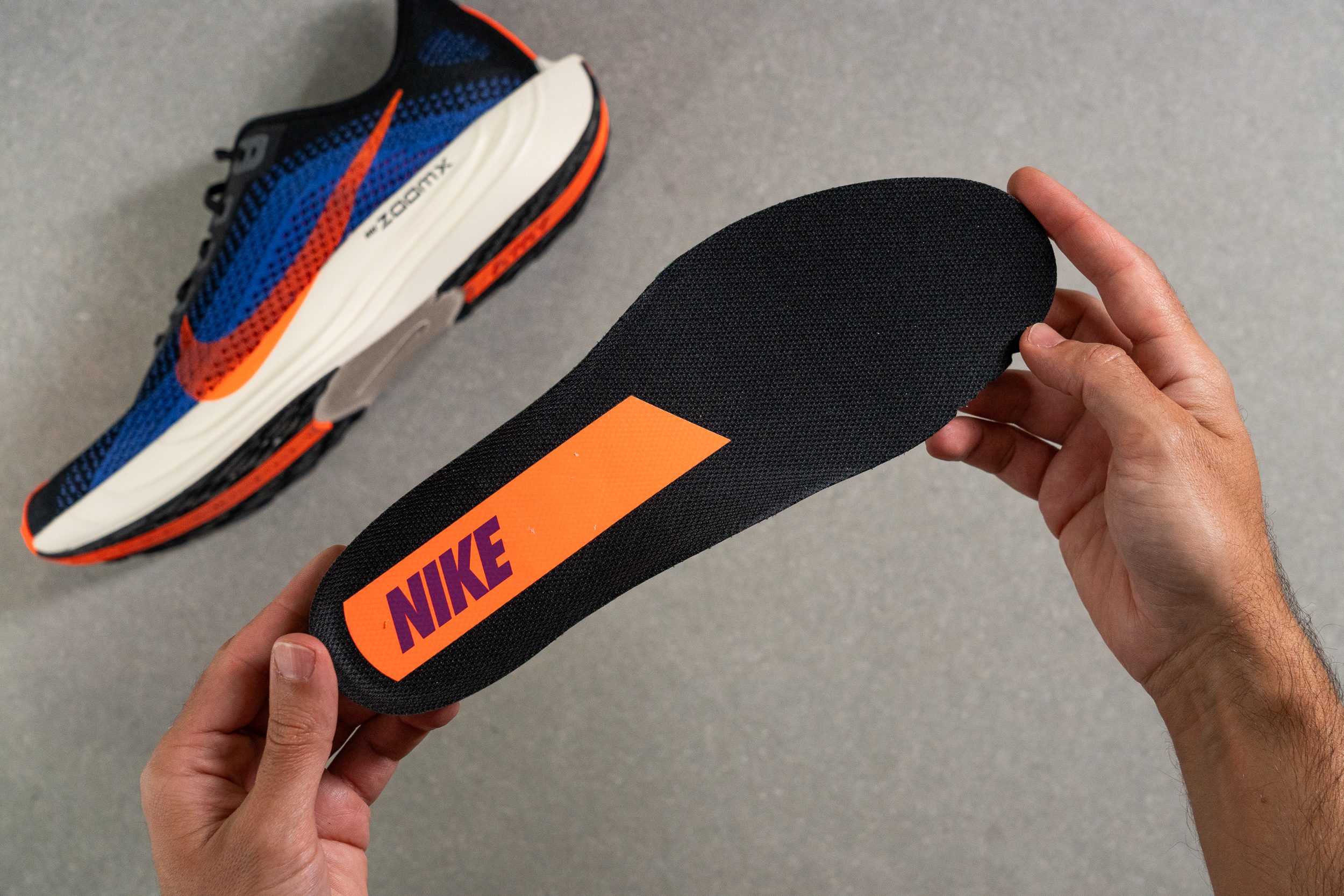
| Pegasus Plus | Yes |
Midsole softness in cold (%)
One of the best aspects of Pebax-based foams is that they typically show minimal change in cold conditions. However, this ZoomX foam shifted more than we anticipated—we discovered a 25.5% increase in stiffness after remeasuring it following 20 minutes in the freezer.

| Pegasus Plus | 26% |
| Average | 24% |
Reflective elements
This one definitely caught us off guard—we weren’t expecting to see reflective elements on the Pegasus Plus, but Nike surprised us by adding them. Great!
| Pegasus Plus | Yes |
Tongue padding
To keep the weight low and stay true to the original Turbo, the Pegasus Plus uses a performance-focused 2.8-mm tongue. We found that it requires some care when tightening the laces to avoid adding too much pressure on the instep.
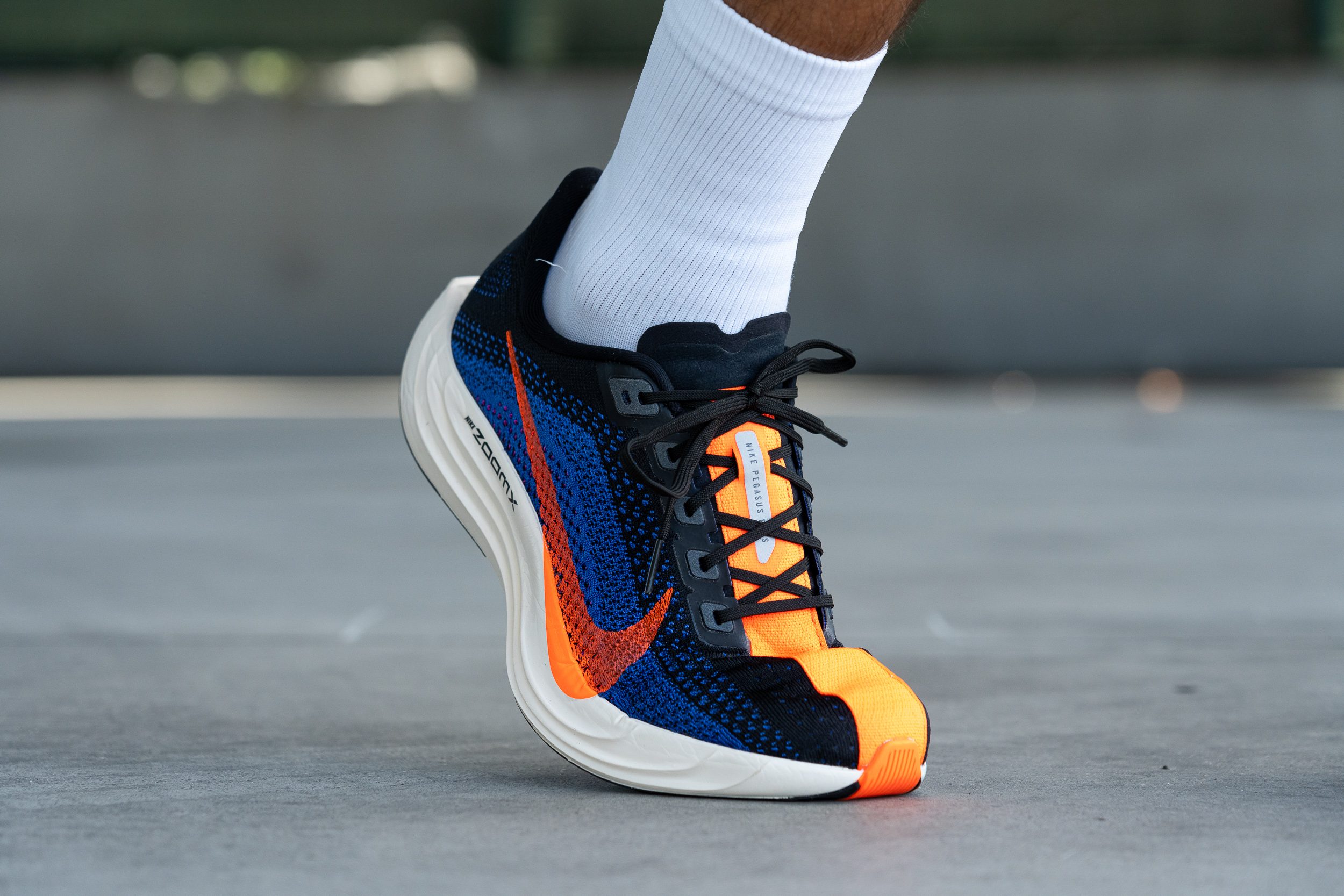
The lockdown feels secure, and the lacing system works well with its punched eyelets, skipping the Flywire technology seen in other Nike models. In our experience, there was no need to tie a runner's knot, but there’s an extra eyelet just in case.
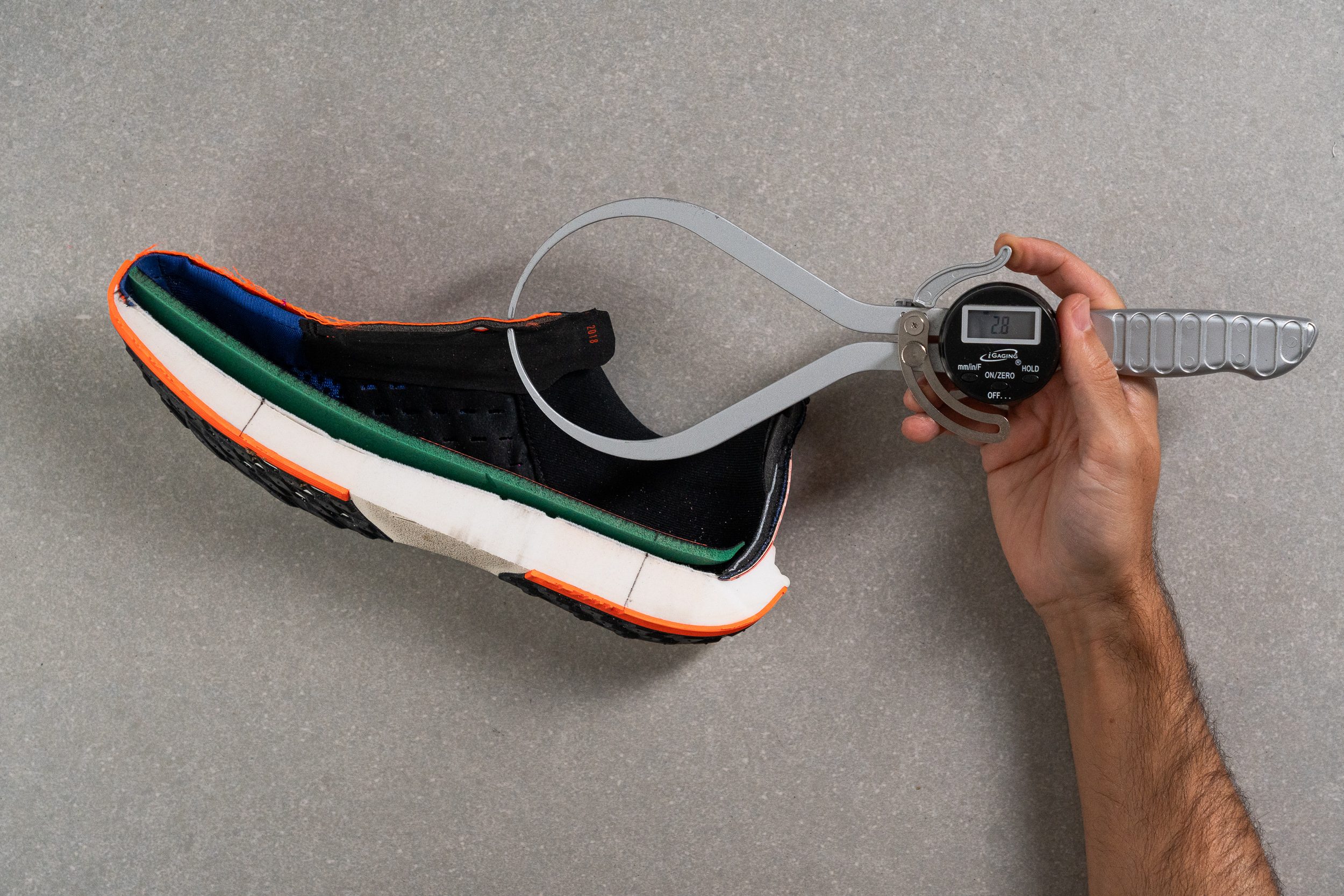
| Pegasus Plus | 2.8 mm |
| Average | 5.8 mm |
Tongue: gusset type
One of the biggest disappointments in the Pegasus Plus is the non-gusseted tongue—especially considering its hefty £180 price tag.
We believe that Nike opted for this design to boost airflow, as ventilation is limited, as we previously discovered. However, regardless of the intent, we think a semi-gusseted tongue is needed here.

| Pegasus Plus | None |
Price
While the original Pegasus Turbo felt expensive yet fair back in 2018, this time we believe the Pegasus Plus is overpriced. Its overall performance and features don’t quite justify such price tag.
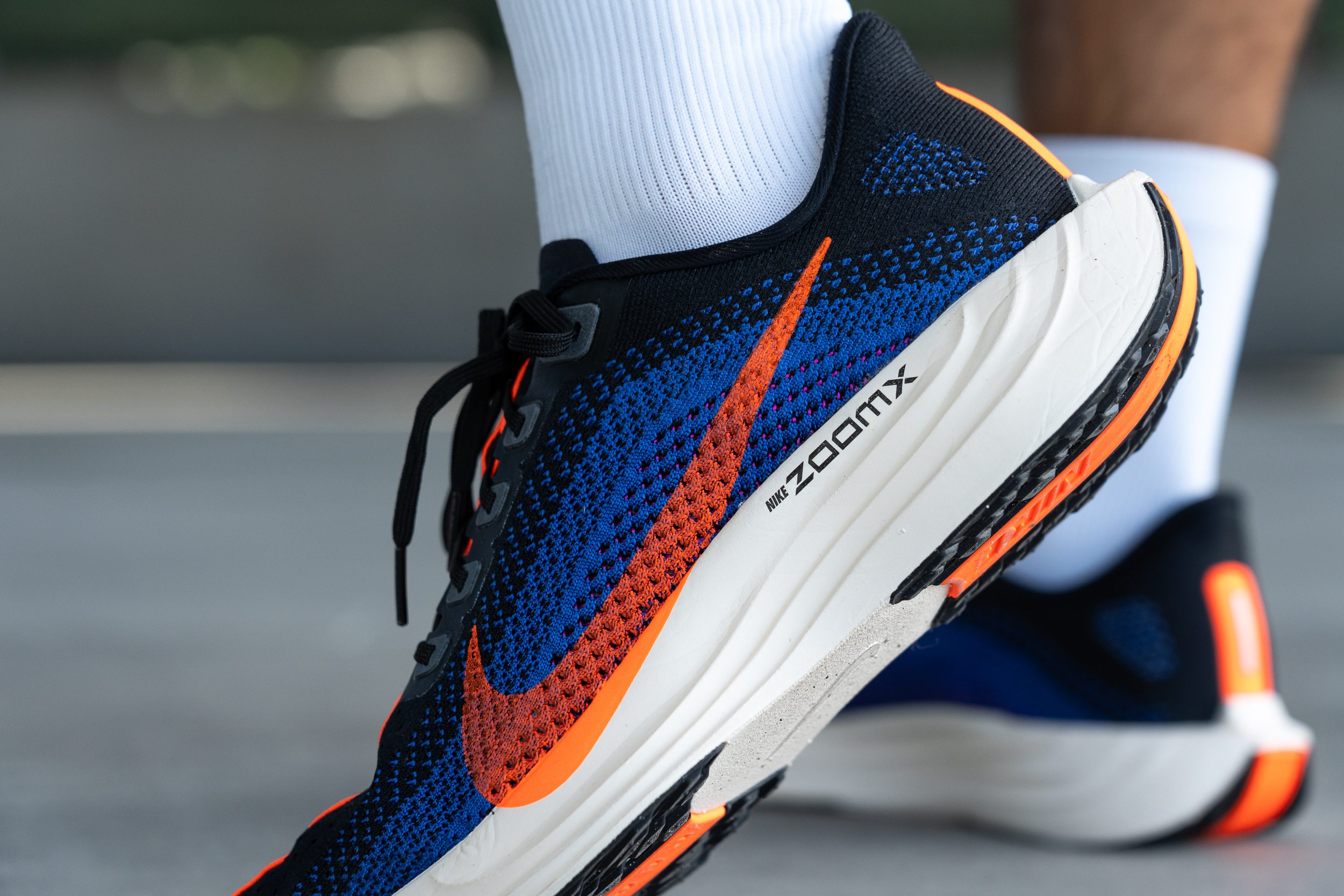
In our view, Nike will likely have to offer solid discounts soon to make it more appealing.
| Pegasus Plus | $180 |
Heel tab
Staying true to its roots and the last three Turbo generations, the heel lacks a finger-loop tab.
While we typically prefer having a pull tab, we appreciate this clean design on the Pegasus Plus—it caused no issues when slipping our feet into the Flyknit upper.
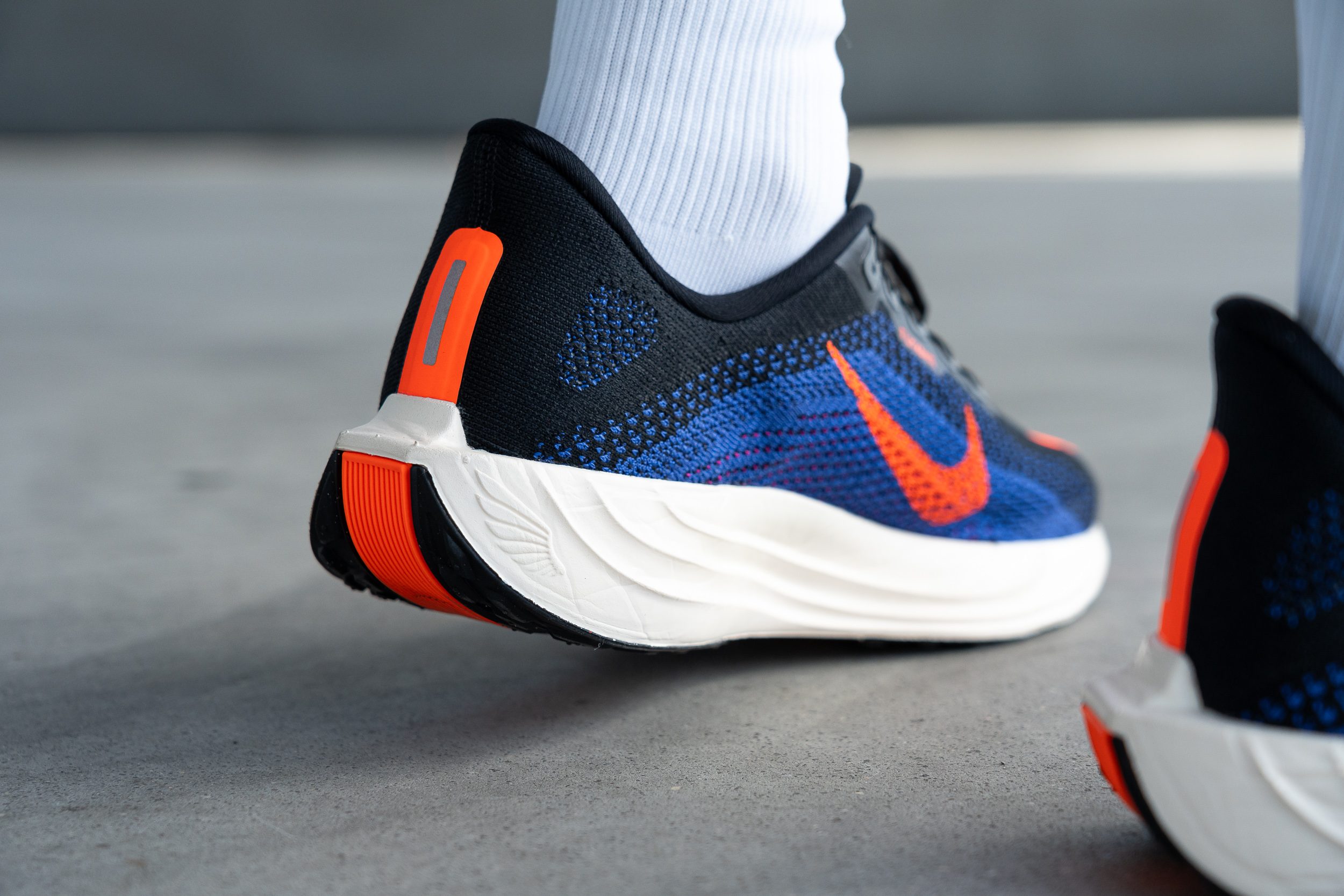
| Pegasus Plus | None |

